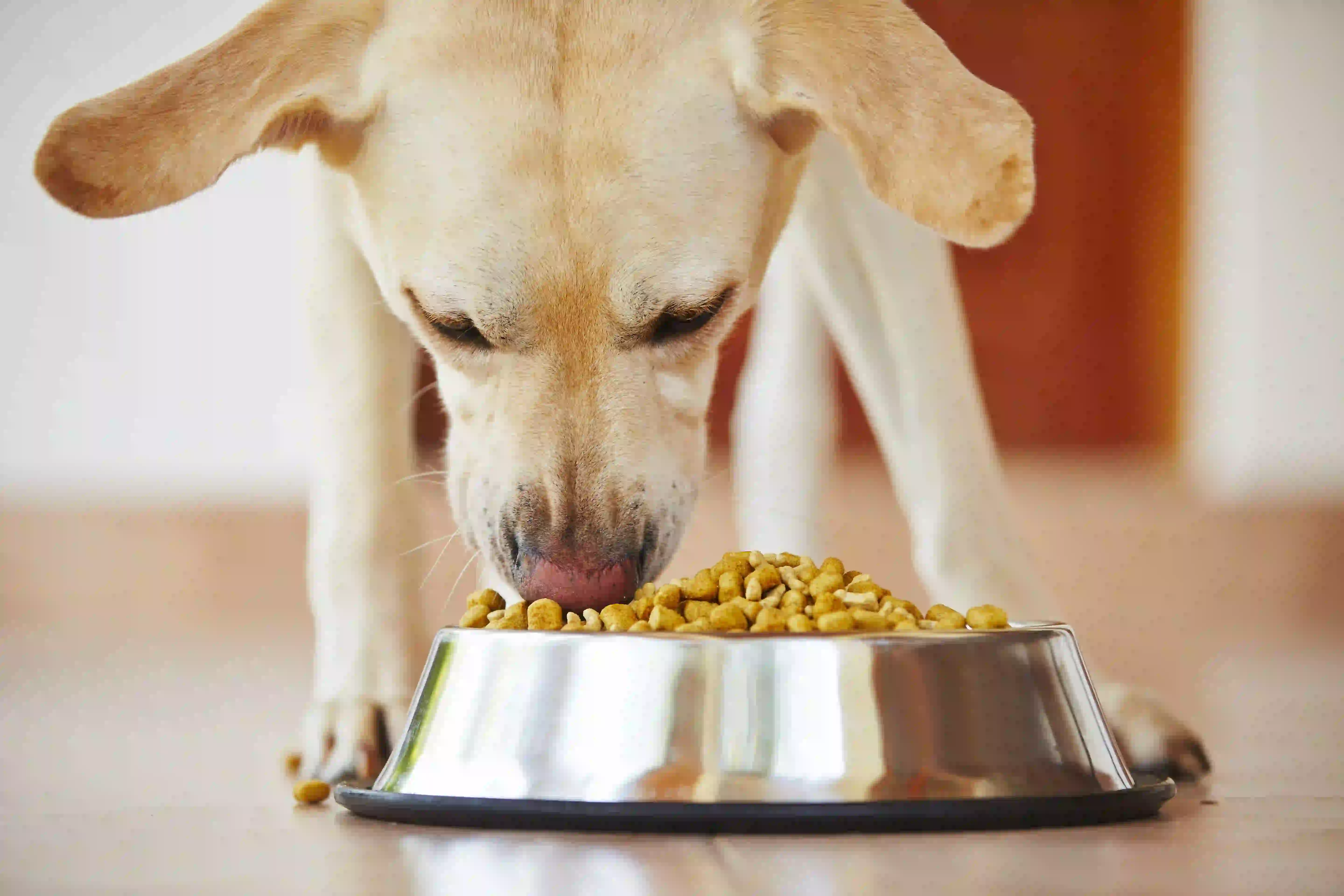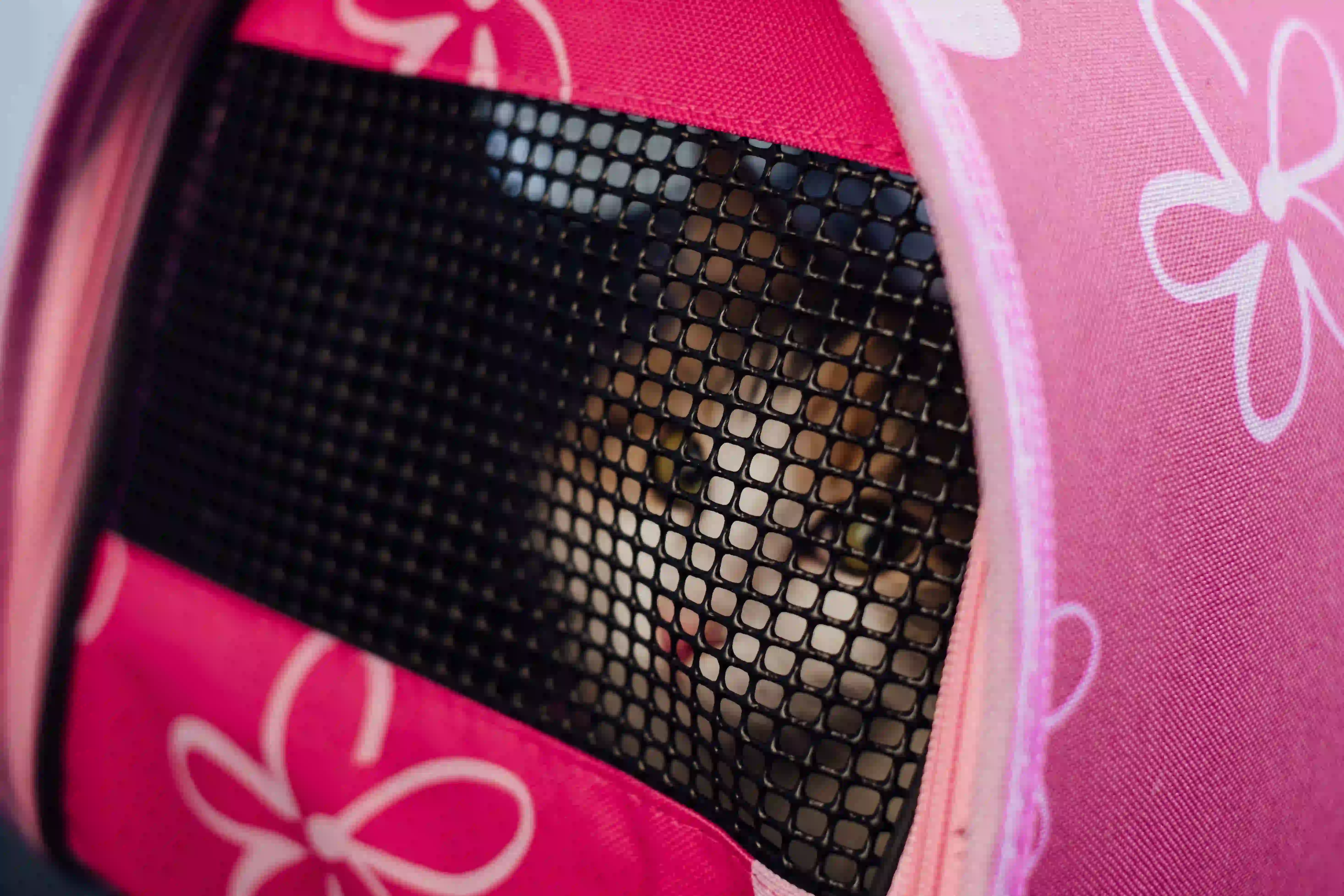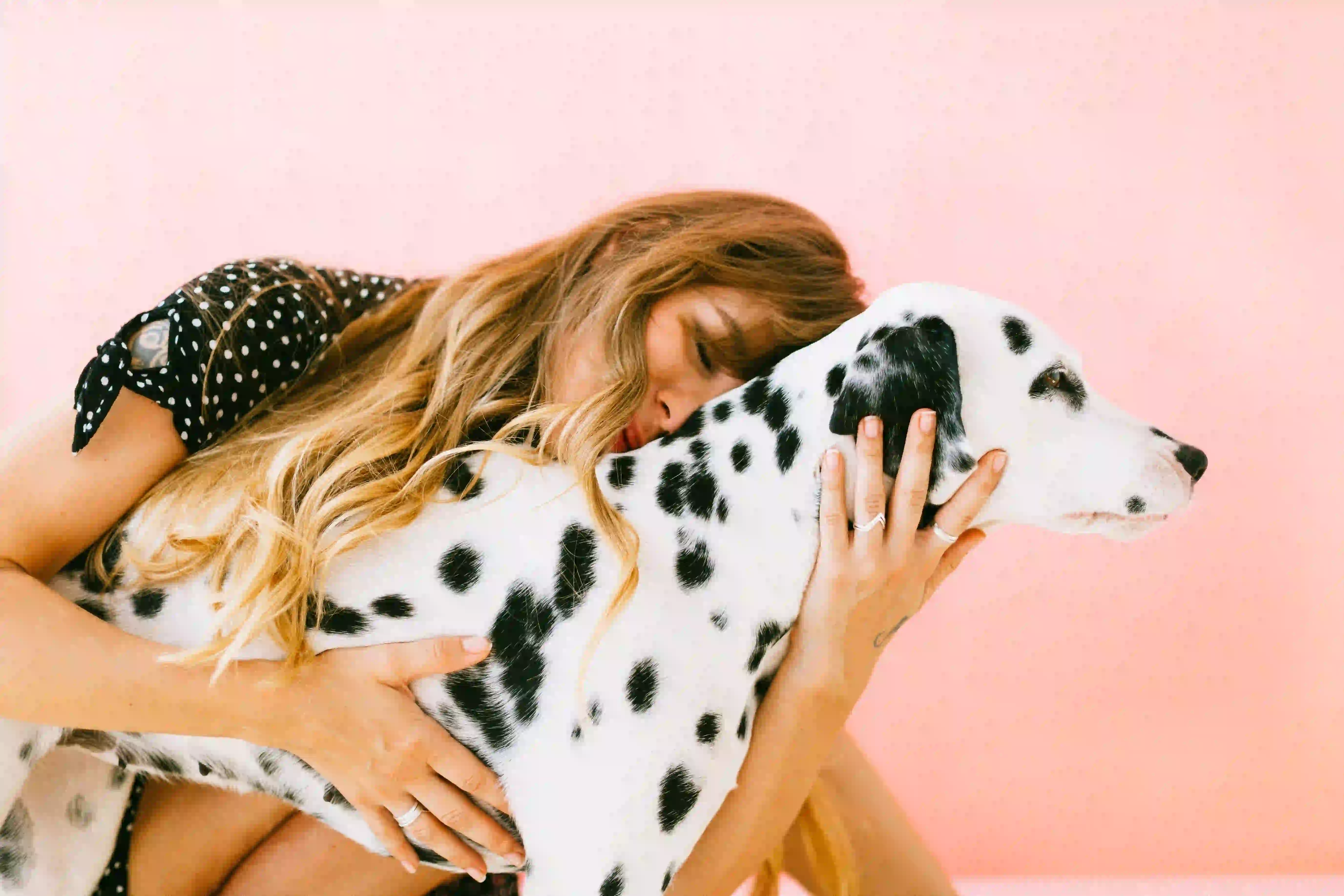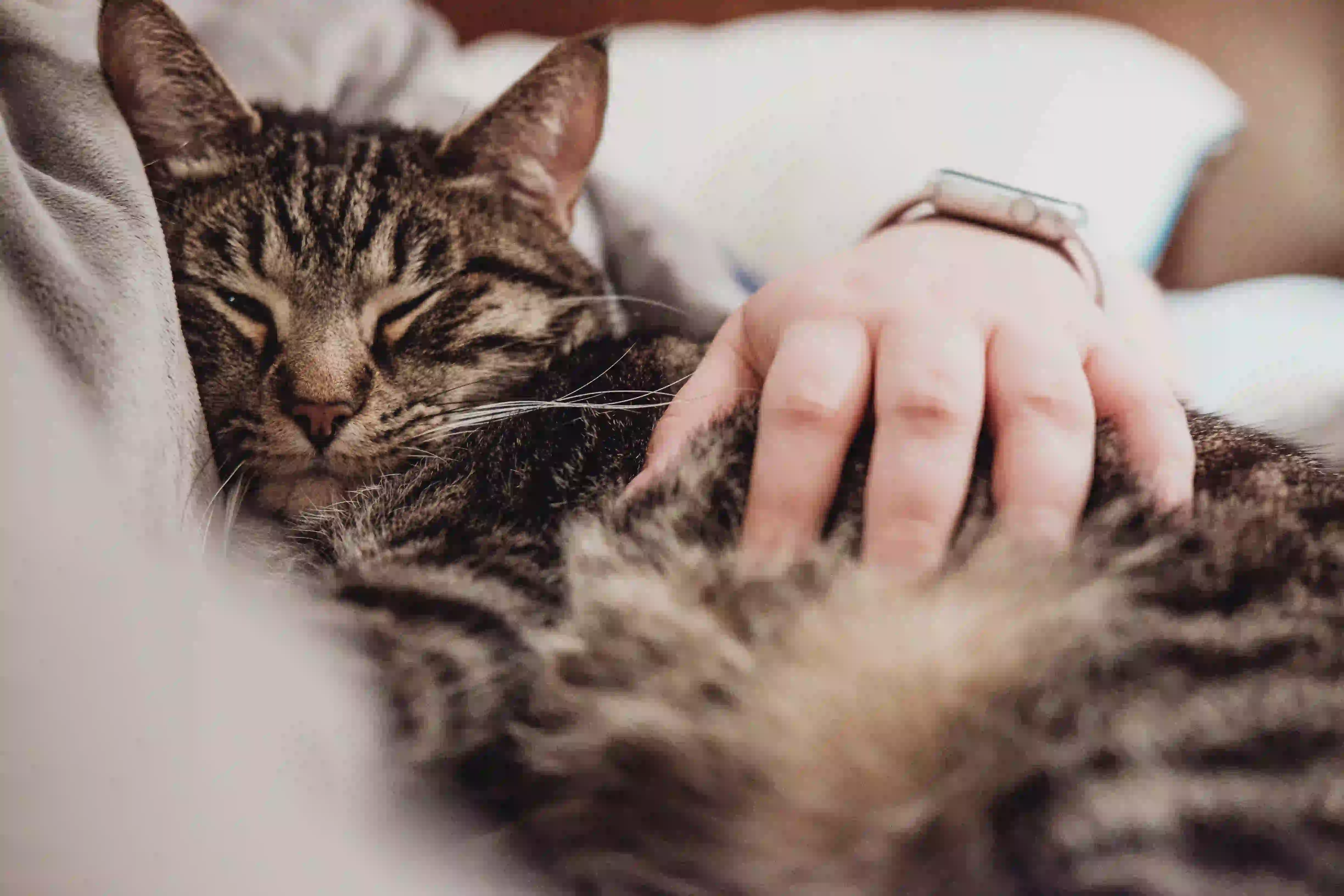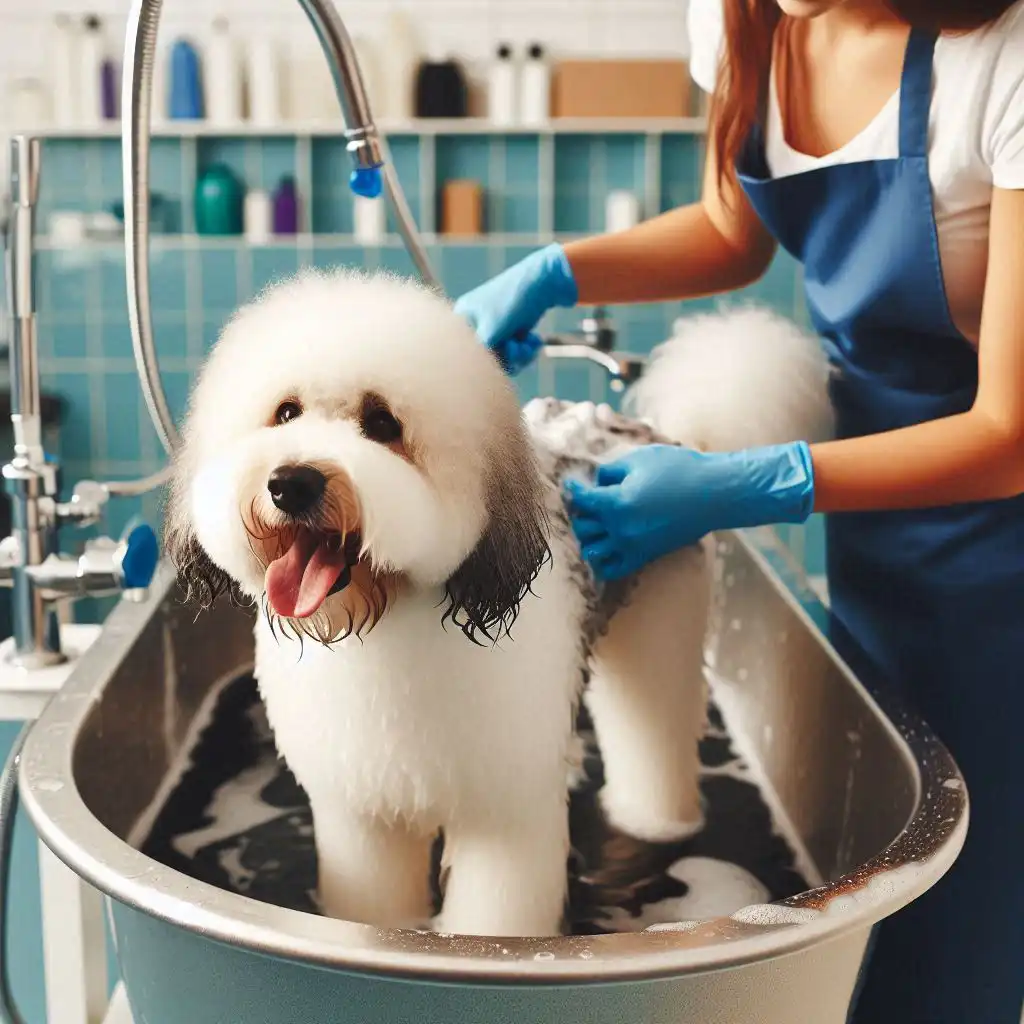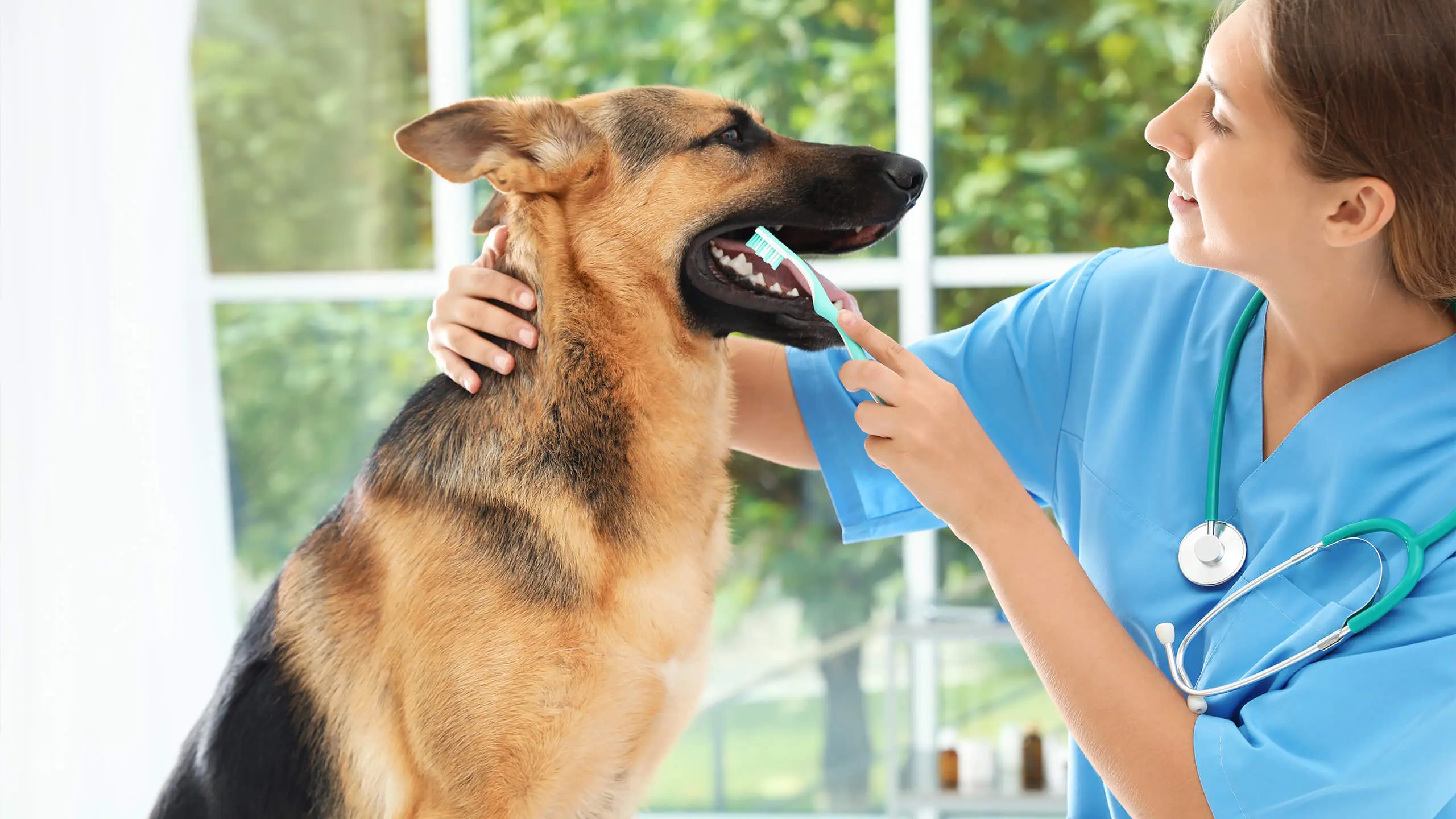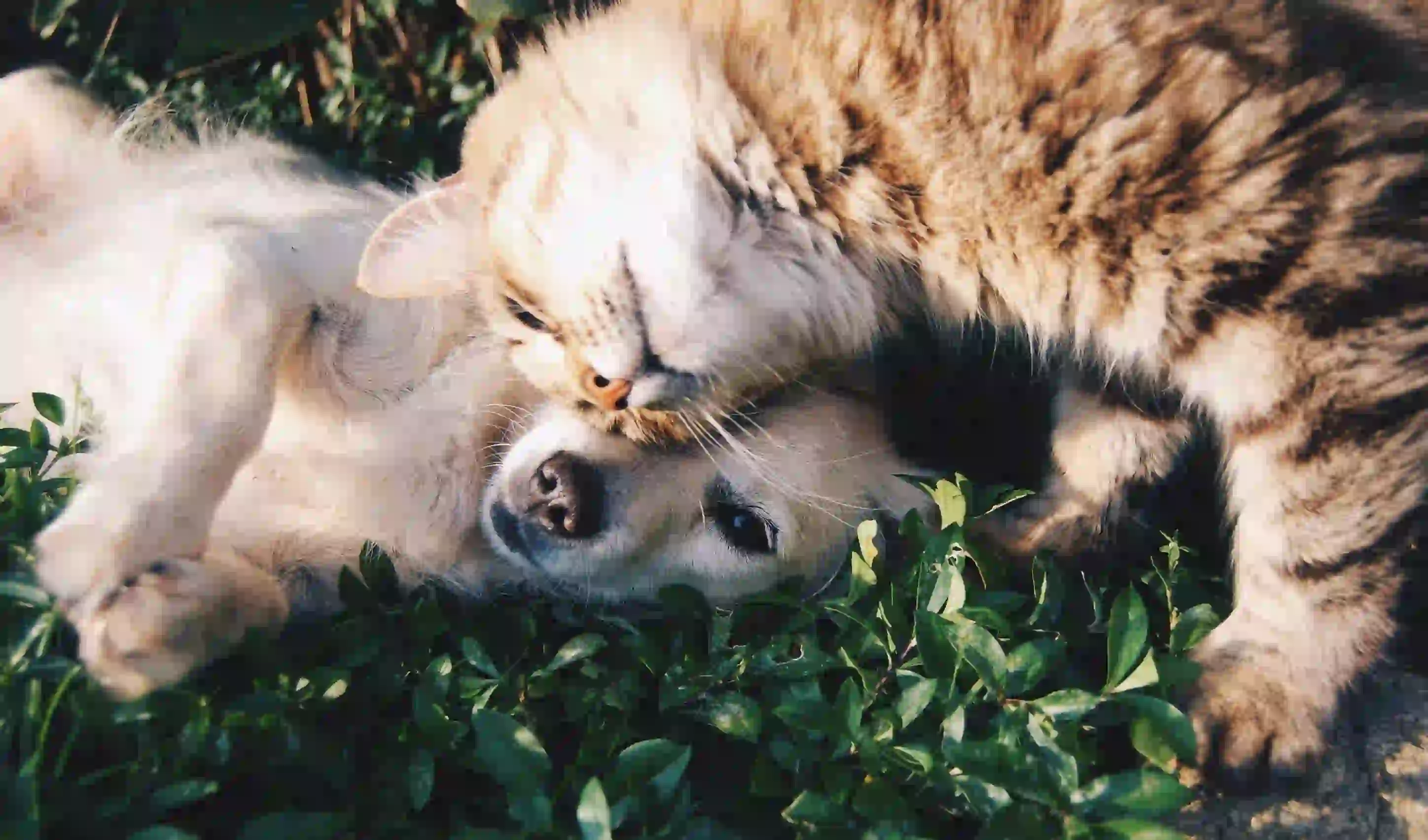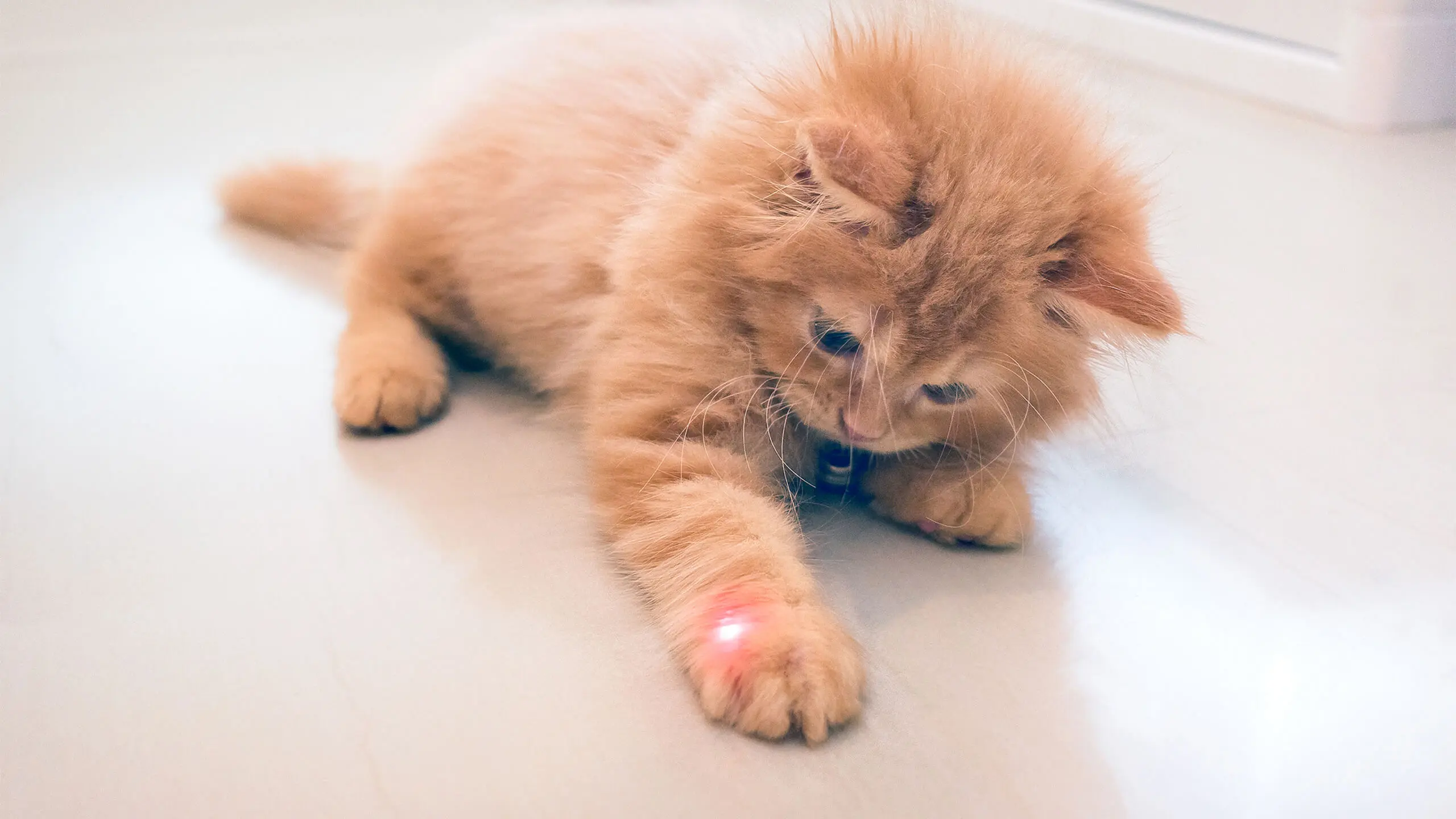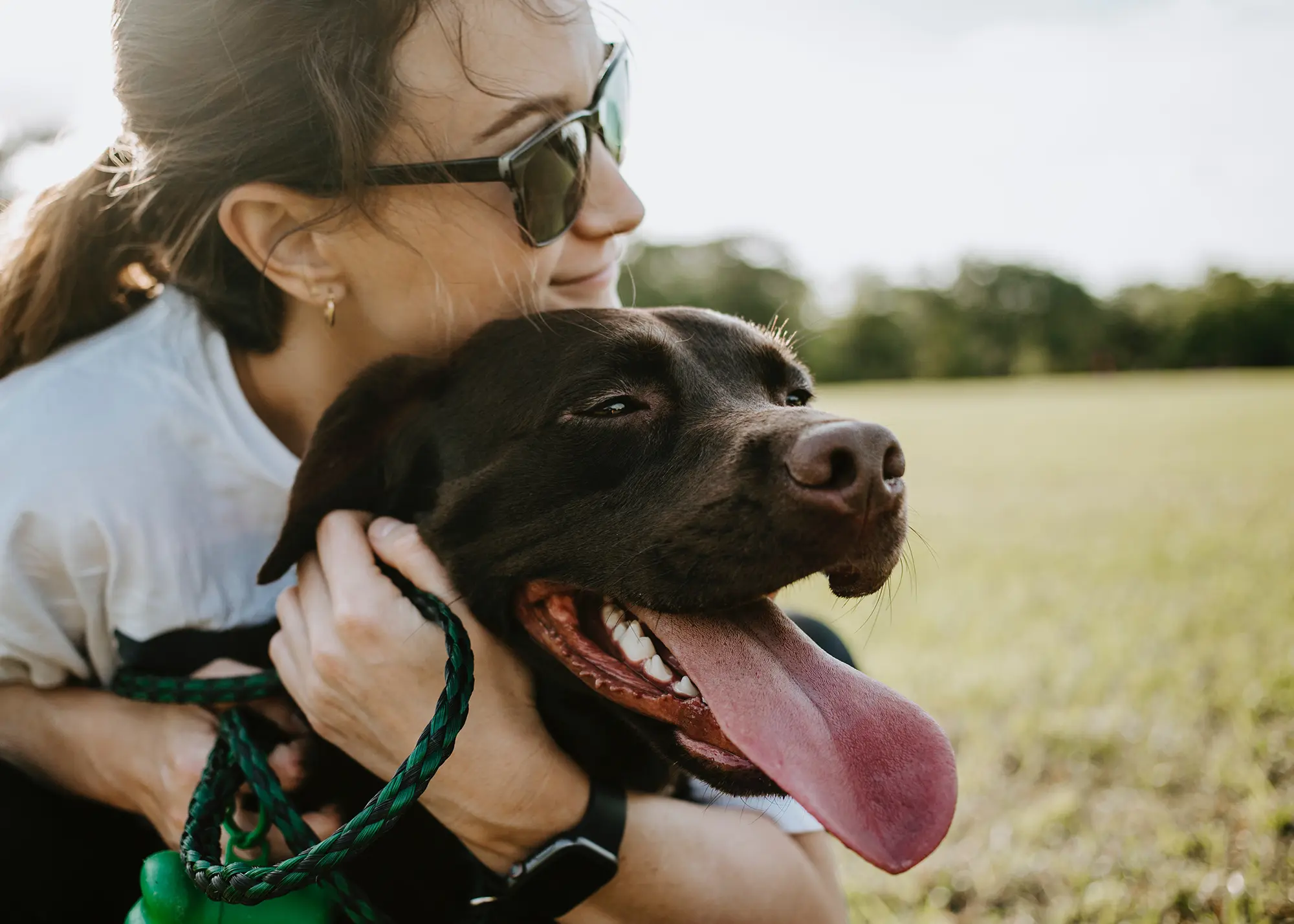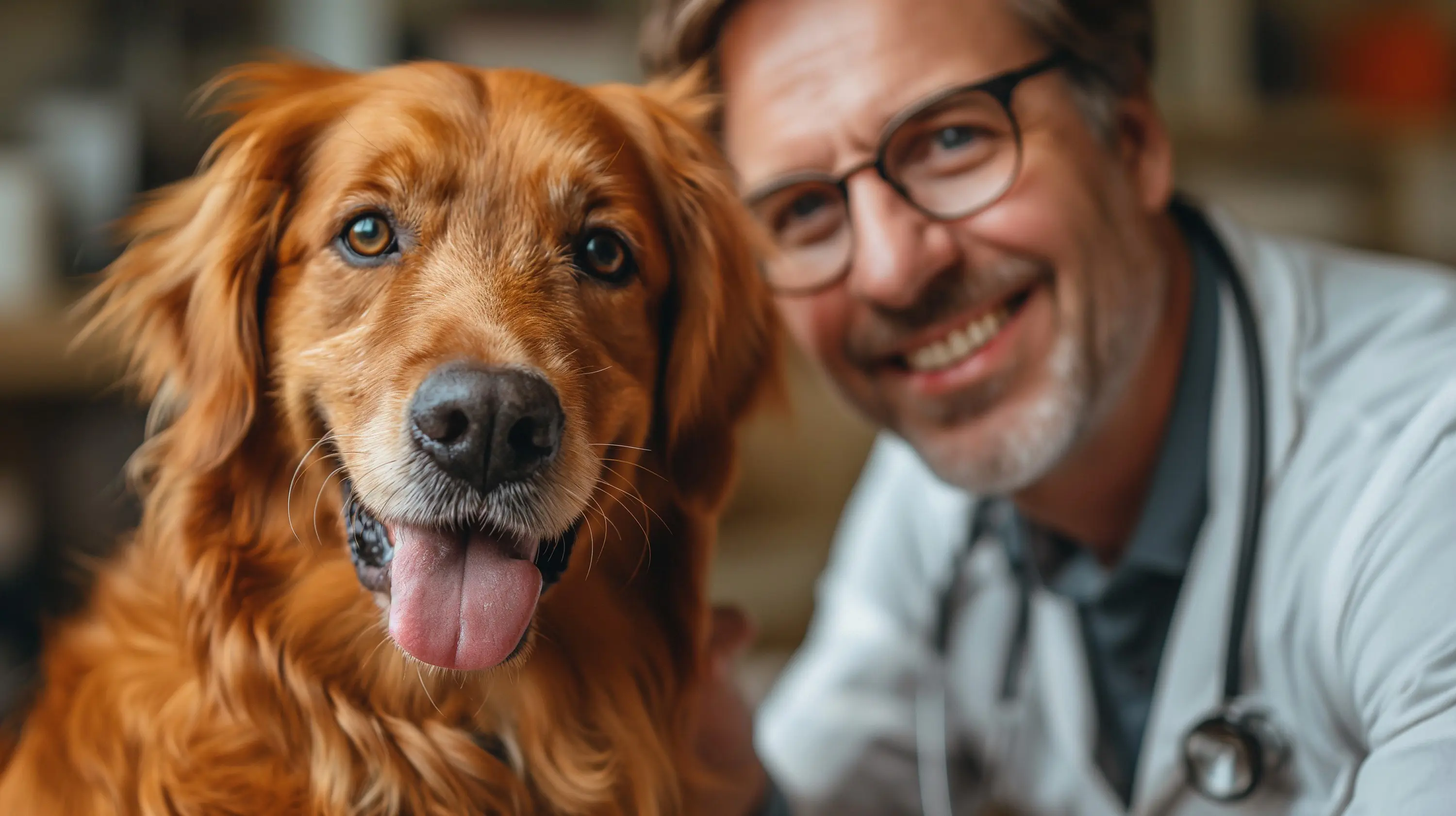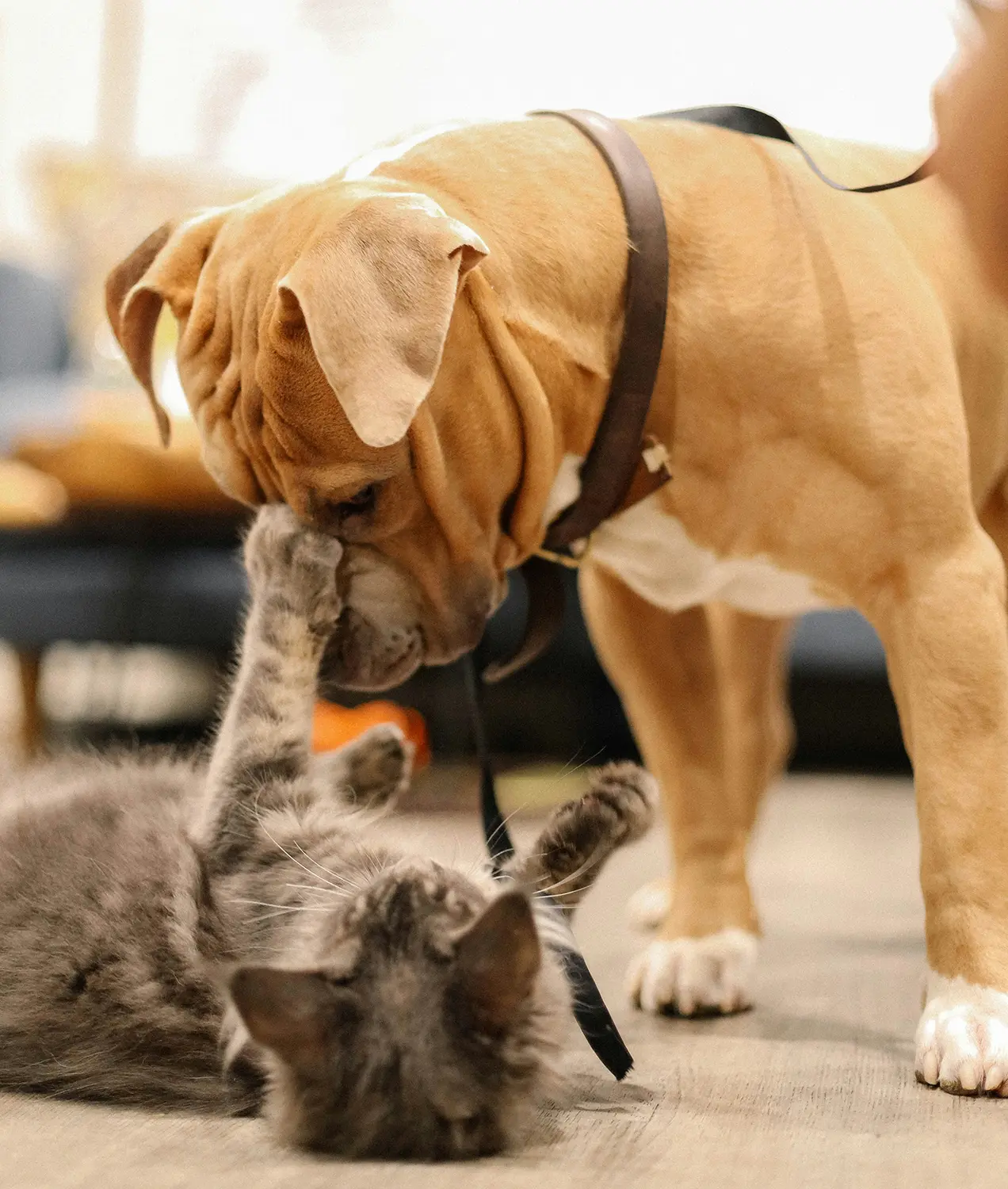Garantizar que su perro reciba una dieta equilibrada y nutritiva es fundamental
para su salud y bienestar generales. Una dieta adecuada favorece su crecimiento,
mantiene sus niveles de energía y ayuda a prevenir toda una serie de problemas
de salud. Esta completa guía explora los componentes clave de una dieta sana
para perros, la importancia de una nutrición adecuada y consejos para alimentar
a su peludo amigo. La importancia de una nutrición adecuada Una nutrición
adecuada es crucial para los perros, ya que afecta a todos los aspectos de su
salud, incluidos: Crecimiento y desarrollo : Los cachorros necesitan los
nutrientes adecuados para crecer y desarrollarse correctamente. Una dieta
equilibrada les proporciona la energía y los elementos necesarios para tener
huesos, músculos y órganos sanos. Niveles de energía : Los perros de todas las
edades necesitan la energía adecuada para mantener sus actividades diarias y sus
funciones metabólicas. Una dieta adecuada proporciona el combustible necesario
para el estilo de vida de su perro. Sistema inmunitario : Las vitaminas y
minerales esenciales ayudan a mantener un sistema inmunitario robusto,
protegiendo a su perro de enfermedades e infecciones. Salud de la piel y el pelo
: Los ácidos grasos omega-3 y omega-6 son vitales para mantener una piel sana y
un pelo brillante. Salud digestiva : Una dieta rica en fibra y nutrientes
adecuados favorece un sistema digestivo sano, evitando problemas como el
estreñimiento y la diarrea. Control del peso : Una nutrición adecuada ayuda a
mantener un peso ideal, reduciendo el riesgo de enfermedades relacionadas con la
obesidad como la diabetes, las cardiopatías y los problemas articulares.
Componentes clave de una dieta equilibrada 1. Proteínas Las proteínas son
esenciales para el crecimiento, la reparación y el mantenimiento de los tejidos
y músculos de su perro. Se componen de aminoácidos, algunos de los cuales son
esenciales y deben aportarse a través de la dieta. Fuentes: Las proteínas
animales de alta calidad, como el pollo, la ternera, el cordero, el pescado y
los huevos, son fuentes excelentes. También se pueden incluir algunas proteínas
de origen vegetal, como las lentejas y los garbanzos. 2. Grasas Las grasas
proporcionan una fuente concentrada de energía y son esenciales para absorber
las vitaminas liposolubles (A, D, E y K). También contribuyen a la salud de la
piel y el pelo. Fuentes: Las grasas animales, los aceites de pescado y los
aceites vegetales (como el aceite de linaza) son buenas fuentes de ácidos grasos
esenciales. 3. Hidratos de carbono Los hidratos de carbono proporcionan energía
y son una fuente de fibra, que facilita la digestión. Aunque no son esenciales,
pueden ser beneficiosos en una dieta equilibrada. Fuentes: Los cereales
integrales (como el arroz integral y la avena), las verduras (como las batatas y
los guisantes) y las frutas (con moderación) son buenas fuentes de
carbohidratos. 4. Vitaminas y minerales Las vitaminas y los minerales son
necesarios para diversas funciones corporales, como la respuesta inmunitaria, la
salud ósea y la función celular. Fuentes: Una dieta variada con ingredientes de
alta calidad suele proporcionar las vitaminas y minerales necesarios. Pueden
utilizarse suplementos si lo recomienda un veterinario. 5. Agua El agua es
esencial para todos los seres vivos. Favorece la digestión, la absorción de
nutrientes y la regulación de la temperatura. Fuentes: Asegúrese de que su perro
tenga acceso a agua fresca y limpia en todo momento. Tipos de comida para perros
1. Alimento seco (croquetas) El alimento seco es una opción popular por su
comodidad y rentabilidad. Tiene una larga vida útil y ayuda a mantener la salud
dental al reducir la acumulación de placa. 2. Comida húmeda La comida húmeda, o
enlatada, suele ser más sabrosa para los perros y contiene más humedad, lo que
puede ser beneficioso para la hidratación. Sin embargo, tiene una vida útil más
corta una vez abierta. 3. Dieta cruda La dieta cruda consiste en carne, huesos,
frutas y verduras sin cocinar. Sus defensores creen que es más natural, pero
requiere una preparación cuidadosa para garantizar el equilibrio nutricional y
la seguridad frente a patógenos. 4. Dieta casera Preparar comidas caseras para
su perro permite un control total sobre los ingredientes. Sin embargo, requiere
una planificación cuidadosa para garantizar que la dieta sea equilibrada y
satisfaga todas las necesidades nutricionales. Consultar con nosotros
veterinarios o un nutricionista de mascotas es esencial. 5. Dieta de
prescripción Las dietas de prescripción se formulan para tratar problemas de
salud específicos, como enfermedades renales o alergias. Sólo deben utilizarse
bajo la supervisión de nuestros veterinarios. Pautas de alimentación 1. Edad y
etapa de la vida Los cachorros, los perros adultos y los perros senior tienen
necesidades nutricionales diferentes. Los cachorros necesitan más proteínas y
calorías para favorecer el crecimiento, mientras que los perros senior pueden
necesitar menos calorías y más fibra para favorecer la digestión. 2. Tamaño y
raza Las distintas razas tienen necesidades nutricionales únicas. Las razas
grandes son propensas a los problemas articulares y pueden beneficiarse de
dietas con glucosamina y condroitina añadidas, mientras que las razas pequeñas
pueden requerir dietas más calóricas debido a sus metabolismos más rápidos. 3.
Nivel de actividad Los perros activos, como los perros de trabajo o los que
practican deportes, necesitan más calorías y proteínas que los perros menos
activos o sedentarios. 4. Condiciones de salud Ciertas condiciones de salud,
como la diabetes, las alergias o las enfermedades renales, requieren ajustes
dietéticos específicos. Consúltenos para que le asesoremos. Como veterinario,
podemos prescribirle una dieta adaptada a la salud y las necesidades médicas de
su perro. Errores comunes en la alimentación 1. Sobrealimentación La
sobrealimentación puede conducir a la obesidad, lo que aumenta el riesgo de
diversos problemas de salud. Siga las pautas de alimentación indicadas en el
envase del pienso y ajústelas en función del nivel de actividad y la condición
corporal de su perro. ¡Recuerde siempre que una mascota sana es una mascota
feliz! 2. Comida de mala calidad Los alimentos de baja calidad con rellenos y
aditivos artificiales pueden provocar deficiencias nutricionales. Elija
alimentos para perros de alta calidad con ingredientes reconocibles. 3. Restos
de comida La comida humana puede ser perjudicial para los perros y provocar
obesidad. Evite darles restos de mesa, especialmente alimentos tóxicos para los
perros, como el chocolate, las uvas, la cebolla y el ajo. 4. Horario de
alimentación incoherente Mantener un horario de alimentación constante ayuda a
regular el sistema digestivo de su perro y puede prevenir problemas de
comportamiento. Conclusión Proporcionar a su perro una dieta equilibrada y
nutritiva es esencial para su salud y longevidad. Comprender los componentes de
una dieta adecuada y adaptar la alimentación en función de la edad, el tamaño,
la raza, el nivel de actividad y el estado de salud de su perro contribuirá a
que su peludo amigo prospere. Consulte siempre a nuestros veterinarios para
elaborar un plan dietético que satisfaga las necesidades específicas de su perro
y controle periódicamente su salud y su peso para realizar los ajustes
necesarios. Con una nutrición adecuada, su perro puede llevar una vida feliz,
sana y activa.
Blog
-
Seguir leyendoViajar con su mascota puede ser una experiencia emocionante y gratificante, que le permitirá compartir nuevas aventuras y crear recuerdos duraderos juntos. Sin embargo, requiere una planificación y preparación cuidadosas para garantizar la seguridad, la comodidad y el bienestar de su mascota. Tanto si se embarca en un viaje por carretera como si vuela a un destino lejano o viaja en tren, esta guía le ayudará a sortear las complejidades de viajar con su peludo compañero. Preparativos previos al viaje 1. Revisión médica Antes de cualquier viaje, programe una revisión veterinaria con nosotros para asegurarse de que su mascota está lo bastante sana para viajar. Nos aseguraremos de que su mascota esté al día con las vacunas y los tratamientos preventivos contra pulgas, garrapatas y gusanos del corazón. Si viaja a otro estado, tenga en cuenta que muchos estados exigen un Certificado de Inspección Veterinaria (CVI) o un certificado sanitario expedido por un veterinario acreditado. Podemos emitir este documento por usted. Confirma que su mascota está sana y libre de enfermedades contagiosas. Normalmente debe expedirse en los 10 días anteriores al viaje. Consulte aquí los requisitos para viajar con mascotas según el estado . La mayoría de los estados exigen una prueba de vacunación antirrábica, y algunos pueden tener requisitos de vacunación adicionales. Por lo tanto, debe llevar consigo una copia de la cartilla de vacunación de su mascota. Si viaja a otro país o se traslada a él, lea nuestra guía Viajar o trasladarse al extranjero con su mascota: Guía completa 2. Identificación y microchips Asegúrese de que su mascota lleva la identificación adecuada, incluido un collar con una placa que contenga su información de contacto. El microchip es una forma fiable de garantizar que su mascota pueda ser identificada y devuelta si se pierde. 3. Kit de viaje para mascotas Empaque un kit de viaje con elementos esenciales como: Comederos y bebederos Correa, collar y arnés Bolsas de basura y caja de arena (para gatos) Medicamentos y material de primeros auxilios Juguetes favoritos y una manta para su comodidad Copias de los registros de vacunación y certificados de salud 4. Aclimate a su mascota Si su mascota no está acostumbrada a viajar, empiece con viajes cortos para que se acostumbre al coche o al transportín. Aumente gradualmente la duración de estos viajes para ayudar a reducir la ansiedad. Viajar en coche 1. Sujeción segura Asegure siempre a su mascota en el coche para evitar distracciones y garantizar su seguridad. Utilice un cinturón de seguridad, un arnés o una jaula de viaje. Nunca permita que su mascota deambule libremente por el vehículo. 2. Descansos frecuentes Planifique descansos regulares cada 2-3 horas para que su mascota pueda estirarse, hacer sus necesidades e hidratarse. Asegúrate de que siempre vaya atado con una correa durante estos descansos. 3. Entorno cómodo Mantenga una temperatura agradable en el coche y evite dejar a su mascota sola en el vehículo, especialmente en condiciones meteorológicas extremas. Proporcione una amplia ventilación y mantenga las ventanas parcialmente abiertas si es necesario. 4. Evite el mareo Para prevenir el mareo, evite dar a su mascota una comida copiosa antes del viaje. Podemos recomendarle medicamentos contra las náuseas si su mascota es propensa a marearse. Viajar en avión 1. Política de la compañía aérea Infórmese con antelación sobre las normas de la compañía aérea para viajar con su mascota. Las distintas aerolíneas tienen requisitos específicos en cuanto a transportines para mascotas, certificados sanitarios y tasas de viaje. 2. Transportín aprobado Elija un transportín aprobado por la compañía aérea que esté bien ventilado, sea seguro y lo suficientemente grande para que su mascota pueda estar de pie, darse la vuelta y tumbarse cómodamente. Etiquete el transportín con su información de contacto y una pegatina de «Animal vivo». 3. Preparativos previos al vuelo Llegue al aeropuerto con antelación para disponer de tiempo suficiente para los procedimientos de facturación y seguridad. Asegúrese de que su mascota ha podido hacer sus necesidades antes de embarcar. 4. En cabina o de carga Si es posible, opte por que su mascota viaje con usted en la cabina. Si su mascota debe viajar en la bodega de carga, asegúrese de que el transportín es resistente y seguro. Informe a los auxiliares de vuelo de que su mascota viaja en la bodega de carga para que puedan controlar la temperatura y las condiciones. Viajar en tren o autobús 1. Compruebe las políticas No todas las compañías de tren o autobús admiten animales de compañía, así que compruebe sus políticas de antemano. Algunas pueden tener restricciones sobre el tamaño o el tipo de mascota permitida. 2. Transportín cómodo Utilice un transportín seguro y bien ventilado que cumpla la normativa de la empresa. Asegúrese de que su mascota esté cómoda y tenga objetos familiares como un juguete o una manta dentro del transportín. 3. Horario de viaje Elija horas de viaje con menos gente para reducir el estrés de su mascota. Asegúrese de que su mascota ha podido hacer sus necesidades antes del viaje y dele agua con frecuencia. Estancias en hoteles con mascotas 1. Alojamientos que admitan mascotas Reserve alojamiento en hoteles o alquileres vacacionales que admitan mascotas. Confirme sus políticas sobre mascotas, incluyendo cualquier tarifa adicional o restricciones sobre el tamaño o la raza de la mascota. 2. A prueba de mascotas Cuando llegue, compruebe que la habitación no presenta peligros potenciales y, si es necesario, póngala a prueba de mascotas. Asegúrese de que las ventanas y balcones son seguros, y retire cualquier objeto que su mascota pueda morder o tragar. 3. Respete las normas del hotel Siga las normas del hotel sobre animales de compañía, incluidas las zonas designadas para ellos y las restricciones de ruido. Limpie siempre lo que ensucie su mascota y evite dejarla sola en la habitación durante períodos prolongados. Consejos generales de viaje 1. Mantener la rutina Intente respetar en la medida de lo posible el horario habitual de alimentación y ejercicio de su mascota. Las rutinas familiares pueden ayudar a reducir el estrés y la ansiedad durante el viaje. 2. 2. Vigile su comportamiento Esté atento a los signos de estrés o malestar de su mascota, como jadeos, lloriqueos o inquietud. Bríndele consuelo y tranquilícelo según sea necesario, y haga ajustes en sus planes de viaje si es necesario. 3. Preparación para emergencias Conozca la ubicación de la clínica veterinaria más cercana a su destino. Conclusión Viajar con su mascota puede ser una experiencia agradable si se planifica y prepara adecuadamente. Si dedica tiempo a garantizar la salud, seguridad y comodidad de su mascota, podrán disfrutar juntos de aventuras sin estrés. Tanto si sale a la carretera como si vuela a un nuevo destino o viaja en tren, estos consejos le ayudarán a realizar el viaje con facilidad y a crear recuerdos maravillosos con su peludo compañero.
-
Seguir leyendoCuando pensamos en donaciones de sangre, nuestra mente suele ir directamente a las necesidades humanas. Sin embargo, nuestros amigos peludos también pueden necesitar transfusiones para salvarles la vida. Ya sea por accidentes, intervenciones quirúrgicas o enfermedades, la demanda de sangre para mascotas es importante y va en aumento. Al igual que los humanos, las mascotas dependen de los donantes de sangre para recuperarse de lesiones y dolencias graves. Este artículo pretende arrojar luz sobre la necesidad crítica de donaciones de sangre de animales de compañía y sobre cómo usted y su mascota pueden contribuir a salvar vidas. La importancia de las donaciones de sangre para mascotas 1. Transfusiones que salvan vidas Las mascotas, sobre todo los perros y los gatos, suelen necesitar transfusiones de sangre debido a traumatismos, intervenciones quirúrgicas, anemia o enfermedades como el cáncer. Una sola donación puede salvar varias vidas, ya que la sangre puede separarse en distintos componentes para tratar diversas afecciones. 2. Situaciones de emergencia Los accidentes ocurren de forma inesperada, y contar con un suministro de sangre fácilmente disponible puede ser la diferencia entre la vida y la muerte. Las donaciones de sangre garantizan que las clínicas veterinarias estén preparadas para emergencias, proporcionando atención inmediata cuando más se necesita. 3. Gestión de enfermedades crónicas Las mascotas con enfermedades crónicas, como hemofilia o insuficiencia renal, pueden necesitar transfusiones periódicas. La sangre donada ayuda a tratar estas enfermedades, mejorando la calidad de vida y la longevidad de las mascotas afectadas. 4. Apoyo a cirugías Las intervenciones quirúrgicas importantes, especialmente las que afectan al corazón u otros órganos críticos, suelen requerir transfusiones de sangre. Las donaciones ayudan a garantizar que los cirujanos veterinarios dispongamos de los recursos necesarios para realizar estas complejas intervenciones de forma segura. Beneficios de la donación de sangre para mascotas 1. Ayudar a la comunidad Al donar sangre, su mascota puede influir directamente en la vida de otras mascotas de su comunidad. Es un acto desinteresado que promueve un sentido de solidaridad y apoyo entre los dueños de mascotas y los amantes de los animales. 2. Exámenes médicos exhaustivos Las mascotas que se convierten en donantes suelen someterse a exámenes médicos exhaustivos, que incluyen análisis de sangre y evaluaciones generales de salud. Esto no sólo garantiza que estén lo suficientemente sanos para donar, sino que también le proporciona a usted información valiosa sobre la salud de su mascota. 3. Factor de bienestar Saber que su mascota ha contribuido a salvar la vida de otro animal es increíblemente gratificante. Es un acto de bondad que aporta alegría y satisfacción, fomentando un vínculo más profundo entre usted y su mascota. Cómo participar Requisitos: Por lo general, los perros deben tener entre 1 y 7 años, pesar al menos 15 kilos y estar al día con las vacunas. Los gatos deben tener entre 1 y 8 años de edad, pesar al menos 4,5 kilos y ser gatos de interior. Ambos deben estar sanos y no deben tomar medicamentos que no sean preventivos. Póngase en contacto con nosotros para una consulta gratuita sobre la donación de sangre de su mascota. Corra la voz: La promoción es crucial. Hable con otros dueños de mascotas sobre la importancia de las donaciones de sangre de mascotas y anímelos a participar. Las redes sociales pueden ser una poderosa herramienta para concienciar y captar más donantes. Conclusión La donación de sangre de animales de compañía es un aspecto vital de la atención veterinaria que, sin embargo, a menudo se pasa por alto. Desempeña un papel crucial a la hora de salvar vidas y garantizar que disponemos de los recursos necesarios para tratar urgencias y enfermedades crónicas. Al donar sangre, su mascota puede convertirse en un héroe para otros animales necesitados, ofreciéndoles una segunda oportunidad de vida. El proceso es seguro, beneficioso y profundamente impactante. Dé el paso hoy para ver si su mascota puede convertirse en donante y ayude a difundir esta causa que salva vidas. Juntos, podemos crear una comunidad más sana y solidaria para todos nuestros compañeros peludos. Póngase en contacto con nosotros para saber si su mascota puede ser donante de sangre.
-
Seguir leyendoLa enfermedad inflamatoria intestinal (EII) es una afección crónica que afecta al tracto gastrointestinal (GI) de perros y gatos. Caracterizada por una inflamación persistente, la EII puede causar una serie de síntomas molestos y debilitantes. Entender esta enfermedad, sus causas, métodos de diagnóstico y estrategias de tratamiento es crucial para que los propietarios de mascotas se aseguren de que sus compañeros peludos lleven una vida cómoda y saludable. Hay que tener en cuenta que la EII puede confundirse con el síndrome del intestino irritable (SII). En realidad, el SII es una enfermedad distinta que tiene un plan de tratamiento diferente. ¿Qué es la enfermedad inflamatoria intestinal? ¿Qué es la EII? La enfermedad inflamatoria intestinal no es una única enfermedad, sino un grupo de trastornos caracterizados por la inflamación crónica del tracto gastrointestinal. En perros y gatos, esta inflamación puede afectar a distintas partes del tracto gastrointestinal, como el estómago, el intestino delgado y el intestino grueso. La inflamación altera la absorción normal de nutrientes, lo que provoca diversos síntomas gastrointestinales. Causas de la EII La causa exacta de la EII no se conoce bien, pero se cree que es el resultado de una respuesta inmunitaria anormal a las bacterias intestinales, los antígenos alimentarios u otras sustancias presentes en el tracto gastrointestinal. Varios factores pueden contribuir a esta respuesta inmunitaria anormal, entre ellos La genética : Ciertas razas son más propensas a desarrollar EII, lo que sugiere una predisposición genética. La dieta : Las alergias o intolerancias alimentarias pueden desencadenar la EII. Las proteínas, los aditivos alimentarios y otros ingredientes pueden provocar una respuesta inmunitaria. Desequilibrio microbiano : Un desequilibrio en la flora intestinal normal puede contribuir al desarrollo de la EII. Desregulación del sistema inmunitario : Una respuesta inmunitaria hiperactiva al contenido intestinal normal puede provocar una inflamación crónica. Razas de riesgo Aunque la EII puede afectar a cualquier perro o gato, algunas razas son más susceptibles. En el caso de los perros, razas como los pastores alemanes, los bóxers y los basenjis presentan un mayor riesgo. Los gatos, en particular los siameses y otros gatos de raza pura, también pueden tener una mayor predisposición a la EII. Síntomas de la EII Los síntomas de la EII en perros y gatos pueden variar en función de la gravedad y la localización de la inflamación. Los signos más comunes son Perros Diarrea crónica : A menudo intermitente y puede contener moco o sangre. Vómitos : Los vómitos frecuentes son un síntoma común, particularmente si el estómago está afectado. Pérdida de peso : A pesar de tener un apetito normal o aumentado, los perros pueden perder peso. Dolor abdominal : Los perros pueden mostrar signos de malestar, como quejarse o adoptar una postura encorvada. Letargo : Una disminución general de los niveles de actividad y entusiasmo. Gatos Diarrea crónica : Al igual que los perros, los gatos pueden presentar diarrea intermitente con mucosidad o sangre. Vómitos : Vómitos frecuentes, a menudo con bolas de pelo o comida. Pérdida de pes : La pérdida de peso a pesar de un apetito normal es un indicador clave. Cambios en el apetito : Algunos gatos pueden tener un apetito aumentado o disminuido. Mal estado del pelaje : Debido a la mala absorción de nutrientes, el pelaje puede parecer apagado y descuidado. Diagnóstico de la EII El diagnóstico de la EII implica una combinación de evaluación clínica, pruebas de laboratorio, diagnóstico por imagen y, en ocasiones, biopsia. Evaluación clínica Como veterinario, comenzaremos con una anamnesis y una exploración física exhaustivas. Preguntaremos sobre la duración y frecuencia de los síntomas, la dieta y cualquier tratamiento previo. Pruebas de laboratorio Los análisis de sangre pueden ayudar a descartar otras enfermedades y evaluar el estado general de salud de la mascota. Los exámenes fecales se realizan para descartar infecciones parasitarias. Los recuentos elevados de glóbulos blancos u otras anomalías pueden sugerir inflamación. Imágenes Las técnicas de imagen como la ecografía o las radiografías pueden proporcionar pruebas visuales de la inflamación del tracto gastrointestinal y ayudar a descartar otras causas de los síntomas, como tumores u obstrucciones. Biopsia El diagnóstico definitivo de la EII suele requerir una biopsia. La endoscopia o la cirugía pueden obtener muestras de tejido del tubo digestivo. Las muestras se examinan histológicamente para identificar el tipo y la extensión de la inflamación. Tratamiento de la EII El tratamiento de la EII en perros y gatos suele implicar una combinación de cambios en la dieta, medicación y cuidados de apoyo. El objetivo es reducir la inflamación, controlar los síntomas y mejorar la calidad de vida. Tratamiento dietético Los cambios en la dieta son la piedra angular del tratamiento de la EII. Las opciones incluyen: Dietas hipoalergénicas : Estas dietas utilizan nuevas fuentes de proteínas o proteínas hidrolizadas para minimizar las reacciones inmunitarias. Dietas ricas en fibra : Para las mascotas con afectación del intestino grueso, las dietas ricas en fibra pueden ayudar a controlar la diarrea. Dietas de prescripción : Las dietas veterinarias especializadas formuladas para la salud gastrointestinal pueden ser beneficiosas. Medicamentos A menudo se necesitan medicamentos para controlar la inflamación y los síntomas: Medicamentos antiinflamatorios : Los corticosteroides, como la prednisona, se utilizan habitualmente para reducir la inflamación. Fármacos inmunosupresore : En casos graves, pueden recetarse fármacos como la azatioprina o la ciclosporina. Antibióticos : El metronidazol o la tilosina pueden ayudar a controlar el sobrecrecimiento bacteriano y las infecciones secundarias. Probióticos : La suplementación con probióticos puede ayudar a restablecer una flora intestinal sana. Cuidados de apoyo Los cuidados de apoyo son esenciales para mantener la salud general de la mascota: Fluidoterapia : Las mascotas con diarrea o vómitos severos pueden necesitar fluidoterapia para prevenir la deshidratación. Suplementos nutricionales : Los suplementos como los ácidos grasos omega-3 pueden ayudar a reducir la inflamación y apoyar la salud intestinal. Control y seguimiento Las citas regulares de seguimiento con nosotros son cruciales para controlar la respuesta de su mascota al tratamiento y hacer los ajustes necesarios. Los análisis de sangre, los controles de peso y las evaluaciones clínicas ayudan a garantizar la eficacia del plan de tratamiento. Conclusión La enfermedad inflamatoria intestinal en perros y gatos es una enfermedad compleja que requiere un enfoque integral para el diagnóstico y el tratamiento. Comprendiendo las causas, reconociendo los síntomas y colaborando estrechamente con nosotros como veterinarios, ustedes, los propietarios de las mascotas, pueden tratar eficazmente la EII y mejorar la calidad de vida de sus mascotas. Con los cuidados y el tratamiento adecuados, muchas mascotas con EII pueden llevar una vida feliz y cómoda.
-
Seguir leyendoLos gatos son compañeros muy queridos, conocidos por su independencia, su personalidad juguetona y su carácter afectuoso. Aunque, en comparación con otros animales de compañía, los gatos pueden requerir relativamente poco mantenimiento, siguen necesitando cuidados adecuados para llevar una vida sana y feliz. Esta completa guía cubre todos los aspectos esenciales del cuidado de los gatos, desde la alimentación y el aseo hasta la salud y el enriquecimiento. 1. Elegir el gato adecuado Antes de traer un gato a casa, tenga en cuenta factores como su entorno vital, estilo de vida y posibles alergias. Hay varias razas de gatos, cada una con un temperamento y unos cuidados únicos. Investigue las distintas razas para encontrar una que se adapte a sus preferencias y circunstancias. Aquí tiene algunos recursos para informarse sobre las distintas razas: Asociación Internacional Felina Asociación Americana de Aficionados a los Gatos Asociación de Aficionados a los Gatos Recomendamos adoptar gatitos después de que tengan al menos 8 semanas de edad, siendo de 12 a 14 semanas lo ideal, ya que son muchos los beneficios de que permanezcan con su familia; uno de los mayores es la socialización. 2. Preparar su casa Crear un entorno seguro y cómodo es crucial para el bienestar de su gato. Estos son algunos artículos esenciales que debe tener antes de traer a su gato a casa: Caja de arena: Coloque una caja de arena limpia en un lugar tranquilo y accesible. Asegúrate de tener una caja de arena por gato, más una extra. Comederos y bebederos: Elija cuencos resistentes y fáciles de limpiar. Colócalos en una zona tranquila y alejada de la caja de arena. Ropa de cama: Ofrezca a su gato una cama cómoda o varios lugares acogedores donde pueda descansar. Postes rascadores: Los gatos necesitan arañar para mantener sus garras y marcar su territorio. Proporcione postes o almohadillas de rascado para proteger sus muebles. Juguetes y enriquecimiento: Los gatos necesitan estimulación mental y física. Proporcióneles juguetes variados, árboles para trepar y juegos interactivos. 3. Nutrición y alimentación Una nutrición adecuada es vital para la salud de su gato. Aquí tienes algunos consejos para alimentar a tu gato: Alimentos de alta calidad: Elija un alimento comercial de alta calidad para gatos que cumpla las normas nutricionales establecidas por la Asociación Americana de Oficiales de Control de Piensos (AAFCO). Los gatos son carnívoros obligados y necesitan una dieta rica en proteínas animales. Dieta adecuada a la edad: Seleccione alimentos adecuados para la etapa de la vida de su gato: gatito, adulto o senior. Horario de alimentación: Por lo general, a los gatos les van bien dos comidas al día. Mida el alimento para evitar la sobrealimentación y la obesidad. Agua dulce: Asegúrese de que su gato tenga acceso a agua fresca en todo momento. Considera el uso de una fuente de agua para gatos para fomentar la hidratación. Estaremos encantados de discutir y recomendar un plan nutricional adecuado para su gato. 4. Grooming El cepillado regular ayuda a mantener la salud del pelo y la piel de su gato. A continuación te explicamos cómo mantener a tu gato en perfecto estado: Cepillado: Cepille a su gato con regularidad para eliminar el pelo suelto y evitar que se apelmace. Los gatos de pelo corto pueden necesitar un cepillado semanal, mientras que las razas de pelo largo pueden requerir un cepillado diario. Corte de uñas: Recorte las uñas de su gato cada pocas semanas para evitar el crecimiento excesivo y reducir el riesgo de arañazos. Atención dental: La salud dental es crucial para los gatos. Cepille los dientes de su gato con un cepillo de dientes y una pasta dentífrica seguros para mascotas, y proporciónele golosinas o juguetes dentales. Bañarse: Por lo general, los gatos saben mantenerse limpios y rara vez necesitan un baño. Si es necesario, utilice un champú específico para gatos y garantice un baño sin estrés. 5. Salud y atención veterinaria La atención veterinaria regular es esencial para mantener sano a su gato. La primera visita de su gatito debería ser a las 8 semanas o lo antes posible después de su adopción. He aquí algunos aspectos clave de la atención sanitaria felina: Vacunas: Mantenga a su gato al día con las vacunas para protegerlo contra enfermedades comunes como el herpesvirus felino, el calicivirus y la rabia. Le recomendaremos las vacunas adecuadas para nuestra zona y el entorno de su gato. Esterilización: Esterilice a su gata para evitar camadas no deseadas y reducir el riesgo de ciertos problemas de salud. Control de parásitos: Utilice preventivos contra pulgas, garrapatas y gusanos . Le recomendaremos el más adecuado para nuestra zona y el entorno de su gato. Revisiones periódicas: Programe visitas veterinarias anuales con nosotros para revisiones de salud, exámenes dentales, y para discutir cualquier preocupación. Reconocer la enfermedad: Esté atento a los signos de enfermedad, como cambios en el apetito, el comportamiento o los hábitos en la caja de arena, y póngase en contacto con nosotros para comentarlo. 6. Enriquecimiento y juego Los gatos necesitan estimulación mental y física para evitar el aburrimiento y garantizar su bienestar. He aquí algunas formas de mantener entretenido a tu gato: Juego interactivo: Haga que su gato participe regularmente en sesiones de juego con juguetes como varitas de plumas, punteros láser y pelotas. Escalar y explorar: Proporcione a los gatos árboles, estanterías y perchas para fomentar la escalada y la exploración. Escondites: Cree escondites y túneles acogedores para que su gato explore y se sienta seguro. Puzzle Toys: Ofrezca comederos rompecabezas o juguetes dispensadores de golosinas para desafiar la mente de su gato y proporcionarle entretenimiento. 7. Socialización y vinculación Crear un vínculo fuerte con su gato es importante para su bienestar emocional. He aquí cómo fomentar una relación positiva: Manipulación suave: Trate a su gato con delicadeza y respete su espacio personal. Evite forzar las interacciones. Refuerzo positivo: Utilice refuerzos positivos, como golosinas y elogios, para fomentar el buen comportamiento. Tiempo de calidad: Pase tiempo de calidad con su gato cada día jugando, acariciándole y hablándole. Comprender el lenguaje corporal: Aprenda a reconocer el lenguaje corporal y las señales de su gato para comprender sus necesidades y emociones. 8. Seguridad Garantizar la seguridad de su gato es crucial. He aquí algunos consejos para mantener a salvo a su gato: Interior vs. Exterior: Considere la posibilidad de mantener a su gato dentro de casa para protegerlo de peligros como el tráfico, los depredadores y las enfermedades. Si le permite salir al exterior, vigílelo o utilice un recinto exterior seguro. Microchipación: Microchip your cat and ensure they wear a collar with an ID tag to increase the chances of being reunited if lost. Podemos ponerle un microchip y registrar a su gato por un coste simbólico. Peligros: Retire las plantas tóxicas, asegure ventanas y balcones, y mantenga las sustancias peligrosas fuera de su alcance. Conclusión Cuidar de un gato implica satisfacer sus necesidades físicas, emocionales y médicas. Si le proporciona una alimentación adecuada, aseo, cuidados veterinarios, enriquecimiento y un entorno seguro, podrá asegurarse de que su amigo felino lleve una vida sana, feliz y satisfactoria. Crear un vínculo fuerte con su gato a través de interacciones positivas y comprender su personalidad única mejorará su compañía y creará un hogar lleno de amor para su compañero felino.
-
Seguir leyendoLos problemas digestivos de las mascotas son una preocupación común que puede afectar significativamente a su salud y bienestar. Tanto los perros como los gatos pueden sufrir diversos problemas gastrointestinales, desde molestias estomacales leves hasta afecciones crónicas graves. Comprender los signos, causas y tratamientos de los problemas digestivos puede ayudarle a garantizar que su mascota se mantenga sana y cómoda. En este artículo se describen los problemas digestivos más frecuentes en los animales de compañía y los tratamientos disponibles para tratarlos. Problemas digestivos comunes en las mascotas 1. Diarrea La diarrea se caracteriza por deposiciones blandas y acuosas y puede ser aguda (de corta duración) o crónica (que dura más de dos semanas). Puede ser causada por indiscreción dietética, infecciones, parásitos, estrés o condiciones de salud subyacentes. 2. Estreñimiento El estreñimiento se produce cuando una mascota tiene dificultades para defecar o defeca con poca frecuencia. Puede ser consecuencia de la deshidratación, la falta de fibra, la ingestión de objetos extraños o ciertas afecciones médicas. 3. Vómitos Los vómitos pueden estar causados por una gran variedad de factores, como cambios en la dieta, toxinas, infecciones, mareos o problemas más graves como obstrucción gastrointestinal o enfermedades sistémicas. 4. Gastroenteritis La gastroenteritis es la inflamación del estómago y los intestinos, que a menudo provoca vómitos y diarrea. Puede estar desencadenada por infecciones, parásitos, toxinas o indiscreciones alimentarias. 5. Pancreatitis La pancreatitis es la inflamación del páncreas y puede ser aguda o crónica. A menudo se asocia con una dieta alta en grasas, pero también puede ser causada por infecciones, medicamentos u otros problemas de salud. 6. Alergias e intolerancias alimentarias Las alergias o intolerancias alimentarias pueden provocar trastornos digestivos, con síntomas como diarrea, vómitos y flatulencias. Identificar y eliminar el alimento culpable de la dieta de la mascota es crucial para su control. 7. Enfermedad inflamatoria intestinal (EII) La EII es una enfermedad crónica que implica la inflamación del tracto gastrointestinal. Puede causar vómitos persistentes, diarrea, pérdida de peso y falta de apetito. A menudo se desconoce la causa exacta, pero puede estar relacionada con una disfunción del sistema inmunitario, la genética o factores dietéticos. Más información sobre la enfermedad inflamatoria intestinal Tratamientos comunes para problemas digestivos 1. Tratamiento dietético La dieta desempeña un papel crucial en el tratamiento de los problemas digestivos. Dependiendo de la afección específica, podemos recomendar: Dieta blanda: Una dieta temporal de pollo hervido y arroz o una dieta blanda prescrita por el veterinario puede ayudar a calmar un malestar estomacal. Hidratación: Asegúrese de que su mascota permanece hidratada, especialmente si tiene diarrea o vómitos. En casos graves, podemos administrar líquidos por vía intravenosa o subcutánea. Dietas especializadas: Para afecciones crónicas como la EII o las alergias alimentarias, normalmente prescribimos una dieta hipoalergénica o de fácil digestión para reducir la inflamación y el malestar digestivo. 2. Medicamentos Los medicamentos pueden ayudar a controlar los síntomas y las causas subyacentes de los problemas digestivos: Antieméticos: Estos fármacos ayudan a controlar los vómitos y las náuseas. Antidiarreicos: Medicamentos para reducir la diarrea y dar firmeza a las heces. Probióticos y prebióticos: Suplementos que favorecen un microbioma intestinal sano y mejoran la digestión. Antibióticos: Utilizados para tratar infecciones bacterianas que causan problemas gastrointestinales. Antiinflamatorios: Medicamentos como los corticosteroides pueden ser prescritos para reducir la inflamación en casos de EII u otras condiciones inflamatorias. 3. Desparasitación Los parásitos son una causa común de problemas digestivos en las mascotas. La desparasitación regular y los exámenes fecales son esenciales para mantener a su mascota libre de parásitos y saludable. 4. Cirugía En casos graves, como obstrucciones gastrointestinales o tumores, puede ser necesaria una intervención quirúrgica. La detección y el tratamiento precoces son fundamentales para evitar complicaciones. 5. Manejo de la pancreatitis Para las mascotas con pancreatitis, el manejo implica: Ayuno: Ayuno inicial para descansar el páncreas. Dieta baja en grasas: Transición a una dieta baja en grasas para prevenir reagudizaciones. Tratamiento del dolor: Medicamentos para controlar el dolor y la inflamación. Medidas preventivas La prevención de los problemas digestivos implica una combinación de dieta adecuada, atención veterinaria regular y un seguimiento cuidadoso de la salud de su mascota: Alimente a su mascota con una dieta equilibrada: Proporcione a su mascota alimentos equilibrados y de alta calidad adecuados a su edad, tamaño y estado de salud. Evite los alimentos de origen humano: Muchos alimentos de consumo humano son tóxicos para las mascotas o pueden causarles trastornos digestivos. Limítese a alimentos y golosinas seguros para su mascota. Revisiones veterinarias periódicas: Las visitas periódicas al veterinario ayudan a detectar y tratar los problemas de salud antes de que se agraven. Hidratación: Asegúrese de que su mascota tiene acceso a agua fresca en todo momento. Evite los cambios de dieta: Los cambios bruscos de dieta pueden provocar trastornos digestivos. La transición a nuevos alimentos debe ser gradual. Vigile los objetos extraños: Mantenga los objetos pequeños, las plantas y otros peligros potenciales fuera de su alcance para evitar su ingestión accidental. Conclusión Los problemas digestivos en los animales de compañía son frecuentes pero manejables con los cuidados y la atención adecuados. Reconocer los signos de problemas gastrointestinales y buscar rápidamente atención veterinaria puede marcar una diferencia significativa en la salud de su mascota. Siguiendo medidas preventivas, manteniendo una dieta equilibrada y colaborando estrechamente con nosotros como veterinarios, puede ayudar a garantizar que el sistema digestivo de su mascota se mantenga sano y funcione de forma óptima.
-
Seguir leyendoAsear a su mascota es más que una simple tarea estética: es un componente vital de su salud y bienestar general. Ya sea que tenga un perro, un gato u otro compañero peludo, el aseo regular juega un papel crucial para garantizar que su mascota se mantenga sana, feliz y cómoda. Este artículo profundiza en los beneficios del aseo y los riesgos asociados a descuidar esta rutina de cuidado esencial. Beneficios de cuidar a su mascota Mantiene la salud de la piel: El aseo regular ayuda a eliminar la suciedad, los residuos y el exceso de grasa del pelaje de su mascota, previniendo la irritación y las infecciones de la piel. El cepillado estimula la circulación sanguínea, favoreciendo una piel y un pelaje sanos. Evita enredos y enredos: El cepillado frecuente evita enredos y enredos, especialmente en razas de pelo largo. Las esteras pueden causar molestias y dolor, lo que provoca irritación de la piel y posibles infecciones si no se tratan. Detección temprana de problemas de salud: Las sesiones de aseo son una excelente oportunidad para revisar a su mascota en busca de bultos, protuberancias, llagas y otras anomalías. La detección temprana de estos problemas puede conducir a una atención veterinaria inmediata y mejores resultados de salud. Reduce la muda: El cepillado regular ayuda a controlar la muda eliminando el pelo suelto. Esto mantiene su hogar más limpio y reduce la cantidad de pelos de mascotas en muebles y ropa. Mejora la comodidad y la higiene: El cuidado mejora la comodidad de su mascota al mantener su pelaje limpio y libre de irritantes. Las orejas limpias, las uñas recortadas y un pelaje sano contribuyen a la higiene y comodidad general de su mascota. Fortalece los vínculos: Las sesiones de cuidado brindan una oportunidad para establecer vínculos afectivos entre usted y su mascota. El contacto físico y la atención ayudan a fortalecer su relación y le brindan a su mascota una sensación de seguridad y afecto. Promueve un comportamiento positivo: las mascotas que se cuidan con regularidad tienden a estar más acostumbradas a que las manipulen, lo que puede reducir la ansiedad y el miedo durante las visitas al veterinario u otras situaciones de manipulación. Esto conduce a un mejor comportamiento y una gestión más sencilla. Riesgos de no cuidar a su mascota Problemas de la piel: Descuidar el aseo puede provocar una acumulación de suciedad, residuos y aceites, lo que provoca irritación de la piel, infecciones y puntos calientes. Los problemas de la piel que no se tratan pueden agravarse y provocar problemas de salud más graves. Esteras y enredos dolorosos: Sin un aseo regular, las mascotas con pelaje largo son propensas a desarrollar esteras y enredos. Estos pueden causar importantes molestias, dolor e incluso restringir la circulación sanguínea en casos graves. Las alfombras también pueden ocultar parásitos y afecciones de la piel. Uñas demasiado grandes: Descuidar el corte de las uñas puede provocar que las uñas crezcan demasiado y causen dolor, afecten el modo de andar de su mascota y potencialmente provoquen problemas en las articulaciones. Las uñas demasiado grandes también son más propensas a romperse, lo que puede ser doloroso y provocar infecciones. Infecciones de oído: La limpieza regular de los oídos es esencial para prevenir la acumulación de cera, residuos e infecciones. Descuidar la higiene del oído puede provocar infecciones de oído dolorosas, que pueden requerir tratamiento y medicación veterinaria. Problemas dentales: Si bien no siempre forma parte del aseo personal, la higiene bucal es igualmente importante. Descuidar el cuidado dental de su mascota puede provocar acumulación de placa, enfermedades de las encías y caries, lo que afecta su salud y comodidad en general. Infestaciones de parásitos: El aseo regular ayuda a detectar parásitos como pulgas, garrapatas y ácaros. Descuidar el aseo aumenta el riesgo de infestaciones que pueden provocar picores intensos, infecciones de la piel y transmitir enfermedades. Problemas de comportamiento: las mascotas que no son aseadas con regularidad pueden desarrollar ansiedad y miedo al acicalamiento y manipulación. Esto puede provocar problemas de comportamiento y hacer que futuras sesiones de aseo y visitas al veterinario sean más estresantes y desafiantes. Conclusión El aseo es un aspecto esencial del cuidado de las mascotas que contribuye significativamente al bienestar físico y emocional de su mascota. Las sesiones regulares de aseo ayudan a mantener la salud de la piel y el pelaje, previenen dolorosos enredos y enredos, reducen la muda y promueven un comportamiento positivo. Por el contrario, descuidar el aseo puede provocar una serie de problemas de salud, incluidas infecciones de la piel, infestaciones de parásitos y problemas de comportamiento. Al incorporar el aseo regular a la rutina de cuidado de tu mascota, te aseguras de que tu amigo peludo se mantenga sano, feliz y cómodo.
-
Seguir leyendoRonronear… Los gatos han cautivado los corazones humanos durante siglos con su gracia, independencia y misteriosas maneras. Entre sus intrigantes comportamientos, uno de los más encantadores es su capacidad para ronronear. Este sonido suave y rítmico ha dejado a científicos y amantes de los gatos preguntándose por igual sobre su origen y propósito. Un nuevo estudio podría dar por fin con la respuesta. Los gatos domésticos poseen «almohadillas» incrustadas en sus cuerdas vocales, que añaden una capa extra de tejido graso que les permite vibrar a bajas frecuencias, según informan los científicos en Current Biology. Además, la laringe de estos animales no parece necesitar ninguna señal del cerebro para producir el ronroneo. Aunque las razones exactas por las que los gatos ronronean siguen siendo objeto de investigación, varias teorías fascinantes arrojan luz sobre esta enigmática comunicación felina. Satisfacción y confort: La asociación más común con el ronroneo es la de un gato contento y relajado. Cuando los gatos ronronean en presencia de sus dueños o mientras se les acaricia, suele significar un estado de tranquilidad y felicidad. El ronroneo parece ser una forma instintiva que tienen los gatos de expresar placer y comodidad, creando una sensación de unión entre el felino y el humano. Comunicación con humanos y otros gatos: El ronroneo no sólo está reservado para la interacción humana; los gatos también ronronean cuando se comunican con otros felinos. Se sabe que los gatitos ronronean para indicar a su madre que están a salvo y buscan su atención. Del mismo modo, los gatos adultos pueden ronronear para transmitir una actitud no amenazadora durante las interacciones sociales con otros gatos. Autocuración y alivio: Sorprendentemente, el ronroneo puede tener beneficios potenciales para la salud de los gatos. Algunos estudios sugieren que las vibraciones de baja frecuencia producidas durante el ronroneo pueden favorecer la curación de sus huesos y tejidos. Sorprendentemente, la frecuencia del ronroneo de un gato, que suele oscilar entre 25 y 30 hercios, coincide con frecuencias conocidas por favorecer la regeneración y curación de los tejidos. Algunos científicos creen que el ronroneo puede contribuir a la reparación ósea y la recuperación muscular. Además, el ronroneo puede servir como mecanismo de autocalmación en momentos de dolor, estrés o enfermedad, proporcionando consuelo y reduciendo la ansiedad. Vínculo afectivo: Cuando los gatos ronronean mientras se acurrucan junto a sus dueños, puede considerarse una expresión de confianza y afecto. El ronroneo durante estos momentos puede ser una forma de que los gatos comuniquen su amor y aprecio por la compañía que reciben. Comunicación con humanos y otros gatos: El ronroneo no sólo está reservado para la interacción humana; los gatos también ronronean cuando se comunican con otros felinos. Se sabe que los gatitos ronronean para indicar a su madre que están a salvo y que buscan su atención. Del mismo modo, los gatos adultos pueden ronronear para transmitir una actitud no amenazadora durante las interacciones sociales con otros gatos. Curación y consuelo: Sorprendentemente, el ronroneo puede tener beneficios potenciales para la salud de los gatos. Algunos estudios sugieren que las vibraciones de baja frecuencia producidas durante el ronroneo pueden favorecer la curación de sus huesos y tejidos. Además, el ronroneo puede servir como mecanismo de autocalmación en momentos de dolor, estrés o enfermedad, proporcionando consuelo y reduciendo la ansiedad. Comunicación en diversas situaciones: Se sabe que los gatos ronronean en diversas situaciones, no sólo cuando están contentos. También pueden ronronear cuando tienen hambre, cuando buscan atención o incluso en situaciones de estrés como forma de tranquilizarse. Aunque muchos aspectos del comportamiento felino siguen intrigando a investigadores y propietarios de mascotas, el enigmático ronroneo sigue siendo un fascinante campo de exploración. Ya sea como muestra de felicidad, como herramienta de comunicación o como medio de autocalmarse, el suave zumbido del ronroneo de un gato sigue aportando alegría y calidez a nuestras vidas. Abrazando la belleza de este misterio milenario, podemos apreciar el vínculo especial entre los humanos y sus compañeros felinos, celebrando la magia que se esconde en cada ronroneo. Referencias: : Current Biology: La laringe de los gatos domésticos puede producir frecuencias de ronroneo sin aporte neuronal. PetMD: ¿Por qué ronronean los gatos? New Scientist: ¿Por qué ronronean los gatos? Great Pet Care: ¿Cómo ronronean exactamente los gatos? Purina: Revelado: ¿Por qué ronronean los gatos?
-
Seguir leyendoFiestas como Nochevieja y el Día de la Independencia son momentos de alegría y celebración para muchas personas. Sin embargo, los ruidos fuertes, las luces brillantes y las actividades inusuales asociadas a estas fiestas pueden ser estresantes e incluso peligrosas para las mascotas. Garantizar la seguridad de su mascota durante estas celebraciones es crucial para su bienestar. Este artículo proporciona consejos esenciales para mantener a sus amigos peludos seguros y tranquilos durante las festividades de Año Nuevo y el Día de la Independencia. Comprender los riesgos 1. Fuegos artificiales y ruidos fuertes Los fuegos artificiales son un elemento básico de las celebraciones de Año Nuevo y del Día de la Independencia, pero los fuertes ruidos pueden asustar a las mascotas y causarles ansiedad y estrés. En casos extremos, esto puede llevar a que las mascotas huyan o se lesionen en un intento de escapar del ruido. 2. Multitudes y fiestas Las grandes reuniones y fiestas pueden resultar abrumadoras para los animales de compañía. La presencia de personas desconocidas y la alteración de su entorno habitual pueden causarles estrés y ansiedad. 3. Decoraciones peligrosas Las decoraciones como serpentinas, globos y barritas luminosas pueden resultar atractivas para las mascotas, pero pueden suponer un peligro de asfixia o provocar obstrucciones intestinales si se ingieren. 4. Peligros alimentarios Los alimentos y bebidas alcohólicas de las fiestas pueden ser tóxicos para las mascotas. Alimentos como el chocolate, las uvas, las pasas y algunos frutos secos son especialmente peligrosos, y el alcohol puede provocar intoxicaciones graves. Tips for Pet Safety During Celebrations 1. Cree un espacio seguro Cree un espacio tranquilo y cómodo para su mascota, alejado del ruido y el alboroto. Puede ser una habitación separada con su cama, juguetes y algún objeto que le reconforte, como una prenda de su ropa. Asegúrate de que tenga acceso a agua fresca y a una caja de arena si es un gato. 2. Utilizar calmantes Considere la posibilidad de utilizar calmantes para reducir la ansiedad de su mascota. Algunas opciones son Camisetas para la ansiedad : Estos proporcionan una presión suave que puede ayudar a calmar a las mascotas ansiosas. Suplementos calmantes : Los productos que contienen ingredientes como L-teanina, melatonina o CBD pueden ayudar a calmar la ansiedad. Difusores de feromonas : Estos liberan feromonas calmantes que pueden ayudar a reducir el estrés. 3. Mantener a las mascotas dentro de casa Durante los espectáculos pirotécnicos, mantenga a las mascotas dentro de casa para evitar que huyan o se lesionen. Cierre ventanas y cortinas para reducir el ruido y la visión de las luces intermitentes. 4. Proporcione distracciones Proporcione distracciones para mantener a su mascota ocupada. Los juguetes interactivos, los comederos rompecabezas o un juguete masticable favorito pueden ayudar a desviar su atención del ruido y la actividad exterior. 5. Ponga ruido de fondo Poner música relajante o encender la televisión puede ayudar a enmascarar el sonido de los fuegos artificiales y otros ruidos fuertes. Elija algo relajante, como música clásica o una banda sonora específica para mascotas. 6. Identificación adecuada Asegúrese de que su mascota lleva una identificación actualizada, como un collar con placas y un microchip. Esto aumenta las posibilidades de que regrese sano y salvo si consigue escapar. 7. Asegure puertas y portones Con las idas y venidas de los invitados, es fácil que una mascota se escape sin ser vista. Asegúrese de que todas las puertas y verjas son seguras, y considere la posibilidad de colocar carteles para recordar a los huéspedes que cierren las puertas rápidamente. 8. Evite los alimentos peligrosos Mantenga los alimentos y bebidas alcohólicas de la fiesta fuera del alcance de las mascotas. Informe a los invitados de los peligros de darles comida humana. Proporcione golosinas seguras para las mascotas si los invitados quieren darles un tentempié especial. 9. Controle la decoración Asegúrese de que los adornos están colocados fuera del alcance y bien sujetos. Evite utilizar artículos pequeños y fáciles de tragar y opte por decoraciones seguras para mascotas siempre que sea posible. 10. Planifique con antelación la estancia de su mascota en el exterior Si su mascota suele estar al aire libre, haga lo necesario para que la lleven al interior durante las celebraciones. Si no es posible, asegúrese de que la zona al aire libre sea segura y ofrezca un refugio adecuado contra el ruido y las luces. Special Considerations for New Year’s Eve Fuegos artificiales a medianoche A medida que se acerca la medianoche, suele aumentar la intensidad de los fuegos artificiales. Asegúrese de que su mascota está a salvo en el interior y de que su espacio tranquilo está preparado mucho antes de medianoche. Esto ayuda a minimizar su exposición a los ruidos más fuertes y aterradores. Confeti y serpentinas El confeti y las serpentinas pueden ser peligrosos si se ingieren. Limpie inmediatamente después de su uso y mantenga a las mascotas alejadas de las zonas donde se utilicen estos artículos. Consideraciones especiales para el Día de la Independencia Desfiles y actividades al aire libre Si tiene previsto llevar a su mascota a un desfile del Día de la Independencia o a un acto al aire libre, asegúrese de que se sienta cómoda con las multitudes y el ruido. Llévelo con correa y proporciónele abundante agua y sombra. Barbacoas y picnics Durante las barbacoas y los picnics, vigile la seguridad de la comida y la bebida. Asegúrese de que su mascota no tenga acceso a la parrilla, los restos de comida o las bebidas alcohólicas. Proporciónele una zona segura y a la sombra para que pueda relajarse lejos del bullicio. Conclusión Las celebraciones de Año Nuevo y del Día de la Independencia pueden ser estresantes y peligrosas para las mascotas, pero con una planificación cuidadosa y medidas proactivas, puede garantizar su seguridad y bienestar. Creando un espacio seguro, utilizando ayudas para calmar y siendo consciente de los peligros potenciales, puede ayudar a sus amigos peludos a estar tranquilos y cómodos durante estas fiestas. Recuerde que un poco de preparación es muy útil para mantener a sus mascotas felices y seguras durante las fiestas.
-
Seguir leyendoTraer un cachorro a casa es una decisión importante que requiere una cuidadosa reflexión. La alegría y la compañía que puede aportar un cachorro son inconmensurables, pero es esencial asegurarse de elegir el adecuado que se adapte a su estilo de vida, al entorno de su hogar y a sus expectativas. Esta guía le ayudará a tomar una decisión informada sobre la selección del cachorro perfecto. Comprender su estilo de vida y sus necesidades Antes de empezar a buscar un cachorro, evalúe su estilo de vida y determine qué tipo de perro encajaría mejor en él. Tenga en cuenta los siguientes factores: Nivel de actividad Los perros tienen distintos niveles de energía. Si lleva un estilo de vida activo y le gustan las actividades al aire libre, como el senderismo o el atletismo, una raza con mucha energía, como un Border Collie, un Labrador Retriever o un Pastor Australiano, podría ser la adecuada. Si prefiere un ritmo más relajado, una raza como un Bulldog, un Basset Hound o un Shih Tzu puede ser más adecuada. Espacio vital La situación en la que vive influye considerablemente en el tipo de perro que debe tener en cuenta. Las razas grandes, como el Gran Danés o el San Bernardo, requieren más espacio y puede que no sean adecuadas para vivir en un apartamento. Por el contrario, las razas pequeñas como los chihuahuas o los teckel pueden prosperar en espacios más pequeños. Dinámica familiar Tenga en cuenta a los miembros de su familia. Si tiene niños pequeños, busque razas conocidas por su amabilidad y tolerancia, como Golden Retriever, Beagle o Cavalier. Si tiene otras mascotas, asegúrese de que el nuevo cachorro se llevará bien con ellas. Algunas razas son más sociables y adaptables, mientras que otras pueden ser más territoriales. Compromiso de tiempo Los cachorros requieren tiempo, paciencia y adiestramiento. Evalúe su agenda diaria para asegurarse de que puede comprometerse con la alimentación, el ejercicio, el adiestramiento y la socialización. Las razas con mayores niveles de inteligencia y energía suelen requerir más estimulación mental y física. Búsqueda de razas Una vez que tenga claro su estilo de vida y sus necesidades, empiece a buscar razas que se ajusten a esos criterios. Características de las razas Cada raza tiene características únicas, como el tamaño, el tipo de pelaje, el temperamento y los problemas de salud. Sitios web como el del American Kennel Club (AKC) ofrecen información detallada sobre las distintas razas. Además, hablar con los criadores y visitar exposiciones caninas puede ofrecer información sobre los rasgos específicos de cada raza. Consideraciones sanitarias Algunas razas son propensas a problemas de salud específicos. Investigue los problemas de salud más comunes de las razas que esté considerando y pregunte a los criadores por las pruebas genéticas y las garantías sanitarias. Por ejemplo, razas como el pastor alemán pueden padecer displasia de cadera, mientras que los dogos y bulldogs pueden tener problemas respiratorios. Elegir el criador adecuado Seleccionar un criador de confianza es crucial para asegurarse de que tendrá un cachorro sano y bien adaptado. A continuación le indicamos cómo encontrar y evaluar criadores: Investigación y referencias Empiece por pedir referencias a su veterinario, amigos o clubes de raza locales. Busque en Internet opiniones y valoraciones de los criadores. Busque criadores que sean miembros de organizaciones reconocidas, como el AKC, que defiende elevados estándares de cría. Visite al criador Programe una visita a las instalaciones del criador para conocer a los cachorros y a sus padres. Observe las condiciones de vida y asegúrese de que están limpias y bien mantenidas. Pida ver los certificados sanitarios y la documentación de las pruebas genéticas para detectar enfermedades hereditarias. Haga preguntas Prepare una lista de preguntas para el criador, por ejemplo ¿Cuánto tiempo lleva criando esta raza? ¿Qué pruebas sanitarias realiza a sus perros reproductores? ¿Puedo ver a los padres del cachorro? ¿Qué tipo de socialización y adiestramiento han recibido los cachorros? ¿Proporcionan una garantía sanitaria y un contrato? Un criador responsable será transparente, estará bien informado y dispuesto a responder a sus preguntas. Evaluación del cachorro Cuando visite al criador, tómese su tiempo para evaluar a los cachorros. Tenga en cuenta los siguientes aspectos: Temperamento Observe el comportamiento de los cachorros. Busque un cachorro curioso, amistoso y seguro de sí mismo. Evite los cachorros demasiado tímidos, miedosos o agresivos. Interactúe con los cachorros para ver cómo responden al contacto humano y a la manipulación. Salud Examine al cachorro en busca de signos de buena salud. Los ojos deben ser claros y brillantes, el pelo debe estar limpio y brillante y el cachorro debe mostrarse activo y juguetón. Compruebe si presenta signos de enfermedad, como tos, estornudos o diarrea. Pregunte al criador por el historial de vacunación y desparasitación del cachorro. Compatibilidad Pase tiempo con el cachorro para ver si existe una conexión natural. Observe cómo interactúa con usted y con los miembros de su familia. El cachorro adecuado encajará a la perfección y establecerá un buen vínculo con su familia. Preparación del cachorro Antes de llevar a su nuevo cachorro a casa, asegúrese de estar totalmente preparado: Suministros Abastézcase de los suministros esenciales, como una jaula, una cama, comederos y bebederos, comida de alta calidad para cachorros, juguetes, utensilios de aseo y ayudas para el adiestramiento. Cree un espacio seguro y cómodo para que el cachorro descanse y juegue. Adiestramiento y socialización Planifique el adiestramiento y la socialización desde el primer día. Inscríbase en un curso de adiestramiento de cachorros para aprender las nociones básicas de obediencia y socialización. Un adiestramiento constante ayudará a su cachorro a desarrollar buenos modales y a prevenir problemas de comportamiento. Atención veterinaria Concierte una cita con nosotros poco después de traer a su cachorro a casa. Le haremos un chequeo médico completo, le vacunaremos y le propondremos un plan de cuidados preventivos. Esto es crucial para la salud a largo plazo de su cachorro. Conclusión Elegir el cachorro adecuado implica una cuidadosa reflexión, investigación y preparación. Si conoce su estilo de vida, busca razas, elige un criador de confianza y evalúa a los cachorros, podrá encontrar un amigo peludo que le aportará alegría y compañía. No dude en consultarnos. Estaremos encantados de responder a sus preguntas y ayudarle a elegir a su compañero peludo. Recuerde que un cachorro es un compromiso a largo plazo, y hacer la elección correcta le garantizará una relación feliz y sana durante muchos años.
-
Seguir leyendoComo dueño devoto de un perro, aprecias cada movimiento de su cola, cada ladrido juguetón y esos ojos conmovedores que te miran con lealtad inquebrantable. Entre todos los mimos y las sesiones de búsqueda, hay un aspecto crucial del bienestar de su compañero peludo que a menudo pasa desapercibido: la higiene dental . ¿Por qué es importante el cuidado dental de los perros? Prevención de enfermedades de las encías Al igual que los humanos, los perros son susceptibles a las enfermedades de las encías. Cuando su can mastica croquetas o roe un juguete, comienza una danza: un tango de saliva, bacterias y partículas de comida. Esta coreografía da lugar a la formación de placa , una película bacteriana pegajosa que se adhiere a los dientes. Con el tiempo, si no se controla, la placa se convierte en sarro , que puede irritar las encías y provocar gingivitis. Un cuidado dental regular, ya sea mediante cepillado, mordedores dentales o limpiezas profesionales, protege las preciosas encías de su perro. Desterrar el mal aliento El inconfundible aliento de los perros. Aunque puede resultar entrañable para algunos, un mal aliento persistente puede ser señal de problemas dentales subyacentes. Imagínese a su cachorro intentando seducir a sus compañeros caninos con aliento a dragón: ¡no es la mejor forma de romper el hielo en el parque canino! Un cuidado bucal constante ayuda a mantener el aliento de su perro fresco y socialmente aceptable. Conservación de los dientes y prevención de su pérdida Una dentadura sana es esencial para la calidad de vida general de su perro. El cepillado regular y los juguetes adecuados para masticar ayudan a prevenir la caries y la pérdida de dientes. Recuerde que la pérdida de un diente no es sólo un problema estético, sino que afecta a la capacidad de su perro para masticar, jugar y disfrutar de la vida al máximo. Garantizar una nutrición adecuada Imagínese intentar saborear una comida con dolor de muelas: ¡ouch! El dolor dental puede disuadir a su perro de comer, lo que provoca una pérdida de peso y deficiencias nutricionales. Si mantiene una buena salud bucal, se asegurará de que su amigo peludo pueda saborear las comidas sin molestias. Más allá del blanco nacarado: salud sistémica Lo crea o no, la salud dental no sólo afecta a la boca. Las bacterias de las enfermedades de las encías no tratadas pueden entrar en el torrente sanguíneo y afectar a órganos vitales como el corazón, el hígado y los riñones. Un cuidado dental regular contribuye al bienestar general, que se extiende mucho más allá de los caninos. Consejos prácticos para una sonrisa canina radiante Cepillado : ¡Sí, los perros necesitan su propio cepillo de dientes! Utilice un dentífrico apto para perros (nunca para humanos) y cepille suavemente los dientes de su perro. Empiece despacio y vaya aumentando gradualmente la rutina diaria. Juguetes para masticar y premios dentales : Opte por juguetes especialmente diseñados para masticar. No sólo entretendrán a su perro, sino que también le ayudarán a eliminar la placa. Limpiezas profesionales : Las visitas regulares a nosotros para las limpiezas profesionales son esenciales. Se profundiza en los rincones y grietas que su cepillo de dientes no puede llegar, como debajo de las encías, para eliminar la acumulación de placa crítica. Esté atento a los signos : Esté atento a los signos de problemas dentales: mal aliento, babeo, reticencia a comer o sangrado de las encías. La intervención temprana es clave. Recuerde, una sonrisa sana no es sólo para momentos dignos de Instagram; es un testimonio de su compromiso como padre responsable de una mascota. Así que levantemos nuestros cepillos de dientes imaginarios y brindemos por los caninos brillantes de todo el mundo. 🐾 Referencias : PetMD: 5 razones por las que el cuidado dental del perro es importante MSN: La importancia de la higiene dental canina American Kennel Club: Mantenga limpios los dientes de su perro con cinco consejos American Kennel Club: Cuidado dental del perro
-
Seguir leyendoIntroducir una nueva mascota en casa puede ser una experiencia emocionante pero difícil, sobre todo cuando se trata de perros y gatos. Que coexistan pacíficamente depende de sus personalidades individuales, de su socialización previa y de su dedicación a un proceso de introducción gradual y sin estrés. Integrar a perros y gatos puede llevar días, semanas o incluso meses. Aunque algunas mascotas nunca serán compatibles, la mayoría pueden aprender a convivir en armonía. He aquí cinco consejos que le ayudarán a introducir con seguridad a perros y gatos. #1: Evalúe la personalidad de cada mascota Antes de introducir una nueva mascota, evalúe la personalidad de su mascota actual. Observe sus reacciones ante otros animales. Si su mascota es amistosa y curiosa, es más probable que el proceso de introducción tenga éxito. Sin embargo, si muestra miedo o agresividad, considere la conveniencia de seguir adelante. Los gatos suelen adaptarse a los perros, pero no todos los perros son amigos de los gatos. Los perros con un fuerte instinto de presa pueden ver a los gatos como objetivos. Si busca un perro que se lleve bien con su gato, según el AKC, estas nueve razas de perros son una buena elección: Basset Hound Beagle Bulldog Cavalier King Charles Spaniel Collie Golden Retriever Labrador Retriever Papillon Pug #2: Crear espacios separados Al principio, cada mascota debe tener un espacio separado y seguro en su casa. Lo ideal sería que estas zonas estuvieran divididas por una puerta para mascotas y una puerta sólida, que proporcionen un entorno seguro para ambas mascotas. Con el tiempo, el objetivo es que compartan toda la casa y que los gatos tengan una zona libre de perros por seguridad. Este espacio también impide que los perros accedan a la comida y a la caja de arena del gato. Elija estas zonas con cuidado para que cada mascota se sienta segura. #3: Introduzca el olor, el sonido y la vista gradualmente Empiece por permitir que cada mascota se familiarice con el olor de la otra. Intercambie mantas o toallas entre sus espacios para que aprendan el olor del otro. Al cabo de unos días, deje que se oigan mutuamente organizando sesiones de juego o adiestramiento a ambos lados de la puerta. Cuando se sientan cómodos con estos pasos, deje que se vean a través de una puerta para mascotas. Continúe con estas sesiones hasta que ambas mascotas estén tranquilas y centradas en usted. #4: Refuerce el comportamiento tranquilo Recompense a su perro por su comportamiento tranquilo con el gato durante estas sesiones. Practique órdenes como Quédate Siéntate Ven Tacón Abajo con el gato cerca. De este modo, su perro aprenderá a concentrarse a pesar de la presencia del gato. Los perros curiosos y excitables pueden tardar más en calmarse, pero la persistencia es la clave. Con el tiempo, la novedad del gato desaparecerá y ambas mascotas podrán estar más relajadas la una con la otra. # 5: Las sesiones deben ser breves y positivas Las sesiones de introducción deben ser breves, de menos de 10 minutos. Aumente gradualmente la duración a medida que ambas mascotas se sientan más cómodas. Si el progreso se estanca, dé un paso atrás y refuerce el comportamiento tranquilo antes de volver a avanzar. Una vez que ambas mascotas estén relajadas al verse a través de la puerta, puede intentar los encuentros cara a cara. Lleve al perro con correa y asegúrese de que el gato tiene una vía de escape. Las interacciones iniciales deben ser breves. Prolónguelas gradualmente, terminando siempre con una nota positiva. Si no progresa, busque un adiestrador cualificado que le ayude. Con tiempo, paciencia y el enfoque adecuado, la mayoría de los perros y gatos pueden coexistir pacíficamente. Puede que algunos sólo se toleren, mientras que otros pueden formar fuertes vínculos. En cualquier caso, una planificación cuidadosa y un proceso de introducción gradual pueden marcar una diferencia significativa a la hora de crear un hogar armonioso para todas sus mascotas. Referencias: {custom.url.akc.org.dogs.that.are.good.with.cats}
-
Seguir leyendoLas mascotas son criaturas curiosas que suelen explorar su entorno con la nariz y la boca. Aunque las plantas pueden realzar la belleza de nuestras casas y jardines, algunas pueden suponer graves riesgos para la salud de nuestros peludos amigos. Saber qué plantas son venenosas para las mascotas puede ayudarle a crear un entorno más seguro para ellas. Este artículo destaca las plantas más comunes que son tóxicas para perros y gatos, los síntomas de intoxicación por plantas y qué hacer si su mascota ingiere una planta tóxica. Plantas venenosas comunes para las mascotas 1. Lirios Los lirios son extremadamente tóxicos para los gatos. Incluso una pequeña ingestión de cualquier parte de la planta, incluyendo polen, hojas, flores y agua del jarrón, puede causar insuficiencia renal grave. Síntomas: Vómitos Letargo Pérdida de apetito Insuficiencia renal (en 24-72 horas) 2. Palma sagú Las palmeras sagú son muy tóxicas para perros y gatos. Todas las partes de la planta, especialmente las semillas, contienen cicasina, que puede causar insuficiencia Síntomas: Vómitos Diarrea Convulsiones Insuficiencia hepática Muerte 3. Tulipanes y jacintos Los bulbos de tulipanes y jacintos contienen toxinas que pueden causar irritación gastrointestinal grave. Síntomas: Babeo Vómitos Diarrea Aumento de la frecuencia cardiaca Dificultad para respirar 4. Adelfa La adelfa es un arbusto ornamental común muy tóxico para los animales de compañía. Todas las partes de la planta contienen glucósidos cardíacos, que pueden causar graves problemas de corazón. Síntomas: Babeo Vómitos Diarrea Frecuencia cardiaca anormal Temblores Muerte 5. Azaleas y rododendros Las azaleas y los rododendros contienen grayanotoxinas, que pueden afectar al sistema cardiovascular de las mascotas. Síntomas: Vómitos Babeo Diarrea Debilidad Frecuencia cardiaca anormal Convulsiones 6. Narcisos Los narcisos contienen licorina, un alcaloide con fuertes propiedades eméticas (induce al vómito). Los bulbos son la parte más tóxica. Síntomas: Vómitos Diarrea Dolor abdominal Temblores Arritmias cardíacas 7. Azafrán de otoño El azafrán contiene colchicina, que puede causar trastornos gastrointestinales graves y fallo multiorgánico. Síntomas: Vómitos Diarrea Dolor abdominal Daños hepáticos y renales Insuficiencia respiratoria 8. Filodendro y Dieffenbachia Los filodendros y las dieffenbachias contienen oxalatos cálcicos insolubles, que pueden causar irritación e hinchazón oral. Síntomas: Babeo Manoseo de la boca Dificultad para tragar Vómitos 9. Ciclamen El ciclamen contiene saponinas, que pueden causar irritación gastrointestinal y problemas cardíacos en las mascotas. Síntomas: Vómitos Diarrea Salivación Frecuencia cardiaca anormal Convulsiones 10. Pothos El pothos, también conocido como hiedra del diablo, contiene oxalatos de calcio insolubles que pueden causar irritación en la boca y el tracto digestivo. Síntomas: Babeo Vómitos Dificultad para tragar Irritación oral Síntomas de intoxicación por plantas en animales de compañía Reconocer los síntomas de la intoxicación por plantas es crucial para intervenir a tiempo. Los signos más comunes son: Vómitos y diarrea Babeo o salivación excesiva Letargo o debilidad Pérdida de apetito Dolor abdominal Temblores o convulsiones Dificultad para respirar Hinchazón de la boca, lengua o garganta Frecuencia cardiaca anormal Qué hacer si su mascota ingiere una planta tóxica 1. Identifique la planta Intente identificar la planta que ha ingerido su mascota. Esta información nos ayudará a determinar el tratamiento adecuado. 2. Retire el material vegetal Si es posible, retire cualquier resto de material vegetal de la boca de su mascota y evite que siga accediendo a la planta. 3. Póngase en contacto con su veterinario Llámenos a nosotros o a un hospital veterinario de urgencias inmediatamente. Proporcione detalles sobre la planta y la cantidad ingerida. 4. Llame a una línea de control de envenenamientos También puede ponerse en contacto con el Centro de Control de Envenenamientos Animales (APCC) de la ASPCA en el teléfono (888) 426-4435 o con la Línea de Ayuda sobre Envenenamientos de Mascotas en el teléfono (855) 764-7661 para que le orienten. 5. Siga los consejos del veterinario Siga nuestros consejos o los de otro veterinario o centro de toxicología. No intente inducir el vómito ni administrar ningún tratamiento sin orientación profesional. Prevención de la intoxicación por plantas 1. Elija plantas seguras para las mascotas Opte por plantas seguras para las mascotas en su casa y jardín. Algunas alternativas seguras son las plantas araña, los helechos de Boston y las violetas africanas. 2. Infórmese Infórmese sobre las plantas tóxicas más comunes y retírelas de las zonas accesibles a sus mascotas. 3. Controle el acceso al exterior Supervise a sus mascotas cuando estén en el exterior para evitar que mastiquen o ingieran plantas desconocidas. 4. Utilice barreras Utilice barreras o elementos disuasorios para mantener a las mascotas alejadas de plantas potencialmente dañinas. Conclusión Conocer las plantas tóxicas para los animales de compañía y comprender los síntomas de la intoxicación por plantas es esencial para garantizar la seguridad y la salud de sus amigos peludos. Tomando medidas preventivas y estando preparado para actuar con rapidez en caso de emergencia, puede proteger a sus mascotas de los peligros que entrañan las plantas tóxicas. Consúltenos siempre a nosotros o a otro veterinario si le preocupa la exposición de su mascota a plantas potencialmente nocivas.
-
Seguir leyendoLa terapia láser, también conocida como terapia láser fría o terapia láser de baja intensidad (LLLT), es un tratamiento innovador que está ganando popularidad en la medicina veterinaria. Este procedimiento no invasivo e indoloro utiliza energía lumínica para estimular y acelerar los procesos naturales de curación del organismo. La terapia láser puede cambiar las reglas del juego para los animales que sufren diversas afecciones, aliviando el dolor y acelerando la recuperación. En este artículo, vamos a explorar los beneficios, aplicaciones y qué esperar de la terapia con láser para sus mascotas. ¿Qué es la terapia láser? La terapia láser implica el uso de longitudes de onda específicas de luz para penetrar en los tejidos y estimular la actividad celular. La energía luminosa es absorbida por las células, que la convierten en energía química, mejorando la función celular y favoreciendo la curación. La terapia suele utilizar un dispositivo portátil que emite luz láser directamente sobre la zona afectada. Beneficios de la terapia láser 1. Alivio del dolor La terapia láser es eficaz para reducir el dolor asociado a enfermedades crónicas, lesiones y procedimientos quirúrgicos. La energía de la luz ayuda a bloquear las señales de dolor al cerebro y reduce la inflamación, proporcionando un alivio significativo. 2. Efectos antiinflamatorios La terapia promueve la vasodilatación (ensanchamiento de los vasos sanguíneos) y activa el sistema de drenaje linfático, lo que reduce la hinchazón y la inflamación en la zona tratada. 3. Reparación acelerada del tejido y crecimiento celular La terapia láser estimula la actividad celular, aumentando la producción de ATP (trifosfato de adenosina), que impulsa la reparación y regeneración celular. Esto acelera el proceso de curación de heridas, fracturas y lesiones de tejidos blandos. También reduce la formación de tejido cicatricial 4. Mejora de la circulación El aumento del flujo sanguíneo a la zona afectada aporta más oxígeno y nutrientes a los tejidos, ayudando a una recuperación más rápida y reduciendo el tiempo de recuperación después de una cirugía o lesión. 5. Mejora de la función nerviosa La terapia láser puede ayudar a regenerar el tejido nervioso, mejorando la función y reduciendo los síntomas del daño nervioso, como el dolor y el hormigueo. 6. Refuerzo del sistema inmunitario La terapia puede mejorar la respuesta inmunitaria aumentando la producción de anticuerpos y promoviendo la actividad de las células inmunitarias, lo que ayuda al organismo a combatir las infecciones con mayor eficacia. Aplicaciones de la terapia láser 1. Artritis y dolor articular Las mascotas con artritis o dolor articular pueden experimentar un alivio significativo con la terapia láser. Reduce la inflamación y promueve la reparación del cartílago, mejorando la movilidad y la calidad de vida. 2. Recuperación postquirúrgica La terapia láser puede utilizarse en el postoperatorio para acelerar el proceso de curación, reducir el dolor y minimizar la formación de tejido cicatricial. 3. Curación de heridas Para las mascotas con heridas o lesiones, la terapia láser acelera la reparación de los tejidos, reduce la inflamación y previene la infección, lo que conduce a una curación más rápida y eficaz. 4. Afecciones cutáneas Afecciones como los puntos calientes, la dermatitis y otros problemas de la piel pueden beneficiarse de las propiedades antiinflamatorias y curativas de la terapia láser. 5. Lesiones musculares y de ligamentos Esguinces, torceduras y otras lesiones de tejidos blandos se curan más rápidamente con la terapia láser, lo que permite a las mascotas a volver a sus actividades normales antes. 6. Problemas dentales La terapia con láser puede ayudar con condiciones orales como la gingivitis, estomatitis, y después de las extracciones dentales para reducir el dolor y acelerar la recuperación. Qué esperar durante una sesión de terapia láser 1. Preparación Antes de iniciar la terapia con láser, realizaremos un examen exhaustivo para determinar si su mascota es un candidato adecuado. Desarrollaremos un plan de tratamiento adaptado a la condición específica de su mascota. 2. El procedimiento Durante la sesión, su mascota estará cómodamente colocada y nuestro veterinario utilizará un dispositivo láser manual para tratar la zona afectada. El procedimiento es indoloro y a la mayoría de las mascotas les resulta relajante. Las sesiones suelen durar entre 5 y 20 minutos, dependiendo del tamaño de la zona tratada y de la afección. 3. Frecuencia de los tratamientos El número y la frecuencia de las sesiones dependen de la gravedad de la afección. Algunas mascotas pueden requerir varias sesiones por semana inicialmente, seguidas de tratamientos de mantenimiento según sea necesario. 4. Seguridad y efectos secundarios La terapia láser es segura y bien tolerada por la mayoría de las mascotas. Los efectos secundarios son poco frecuentes y pueden incluir un leve enrojecimiento o calor en el lugar del tratamiento, que suele desaparecer rápidamente. Conclusión La terapia láser es una opción de tratamiento potente y no invasiva que ofrece numerosos beneficios para los animales domésticos que sufren una amplia gama de afecciones. Al reducir el dolor y la inflamación y acelerar la curación, la terapia láser puede mejorar significativamente la calidad de vida de su mascota. Si su mascota está luchando con el dolor crónico, lesiones, o la recuperación de la cirugía, considere la posibilidad de discutir la terapia con láser con nosotros. Este tratamiento innovador podría ser la clave para ayudar a su mascota a sentirse mejor y recuperarse más rápido.
-
Seguir leyendoLas garrapatas son algo más que una molestia para nuestros amigos peludos; pueden transmitir enfermedades graves y causar molestias. Saber cómo tratar y eliminar eficazmente las garrapatas es esencial para todo propietario de un animal de compañía. Esta guía le guiará a través de los pasos necesarios para eliminar las garrapatas de forma segura. ¿Qué son las garrapatas? Las garrapatas son pequeños arácnidos parásitos (como los ácaros y las arañas) que se alimentan de la sangre de mamíferos, aves y, a veces, reptiles y anfibios. Se adhieren a su hospedador y a menudo pasan desapercibidas hasta que se llenan de sangre. Entre las enfermedades comunes transmitidas por garrapatas figuran la enfermedad de Lyme, la ehrlichiosis y la anaplasmosis, que pueden afectar tanto a animales domésticos como a seres humanos. Cómo reconocer las garrapatas en su mascota Revise regularmente a su mascota en busca de garrapatas, sobre todo si pasa mucho tiempo al aire libre. Las garrapatas suelen encontrarse en zonas donde el pelaje es más fino, como por ejemplo: Alrededor de las orejas Debajo del collar Entre las patas Alrededor de la cola Entre los dedos de los pies Para comprobar si tiene garrapatas, pásele las manos por el cuerpo, buscando pequeños bultos o irregularidades. Las garrapatas pueden ser tan pequeñas como la cabeza de un alfiler cuando se adhieren por primera vez e hincharse hasta alcanzar el tamaño de un guisante cuando se alimentan y se llenan de sangre. Cómo eliminar las garrapatas de forma segura 1. Reúna los suministros Pinzas de punta fina o una herramienta para quitar garrapatas Guantes (para proteger las manos) Antiséptico, como exfoliante de yodo o alcohol (para limpiar la zona de la picadura) Un recipiente pequeño con tapa, como un tarro de cristal o una bolsa con cierre de cremallera (para guardar la garrapata y poder identificarla si es necesario) 2. Quitar la garrapata Paso 1: Póngase los guantes para evitar el contacto directo con la garrapata. Paso 2: Utilice las pinzas o la herramienta de extracción de garrapatas para agarrar la garrapata lo más cerca posible de la piel de su mascota. Paso 3: Aplique una presión constante y uniforme y tire de la garrapata hacia fuera. Evite retorcerla o sacudirla, ya que esto puede hacer que partes de la garrapata se desprendan y permanezcan en la piel. Paso 4: Coloque la garrapata en el recipiente para su futura identificación, especialmente si su mascota muestra algún signo de enfermedad. 3. Limpie la zona de la picadura Tras retirar la garrapata, limpia la zona de la picadura con un antiséptico para prevenir infecciones. 4. Deshágase de la garrapata No aplaste la garrapata con los dedos. Deshágase de ella introduciéndola en alcohol y sellándola en un recipiente. Cuidados posteriores a la extracción Tras retirar la garrapata, vigile a su mascota para detectar cualquier signo de enfermedad, como fiebre, letargo, pérdida de apetito o hinchazón inusual alrededor de la zona de la picadura. Estos síntomas podrían indicar una enfermedad transmitida por garrapatas. Si observa alguno de estos signos, póngase en contacto con nosotros (su veterinario) inmediatamente. Enfermedades transmitidas por garrapatas Las garrapatas pueden ser portadoras de varias enfermedades que pueden afectar tanto a las mascotas como a los humanos. Algunas enfermedades comunes transmitidas por garrapatas incluyen: 1. Enfermedad de Lyme Causada por la bacteria *Borrelia burgdorferi*, la enfermedad de Lyme puede causar fiebre, cojera, inflamación de las articulaciones y letargo. 2. Ehrlichiosis Esta infección bacteriana puede provocar síntomas como fiebre, pérdida de peso, trastornos hemorrágicos y problemas neurológicos. 3. Anaplasmosis La anaplasmosis está causada por la bacteria *Anaplasma phagocytophilum* y puede provocar fiebre, dolor articular y letargo. 4. Fiebre maculosa de las Montañas Rocosas Esta enfermedad puede causar fiebre, erupción cutánea y dolor articular y es potencialmente mortal si no se trata a tiempo. Conclusión Las garrapatas son un serio motivo de preocupación para los dueños de mascotas, pero con controles regulares, técnicas adecuadas de eliminación y tratamientos preventivos, puede mantener a su mascota segura y sana. Si tiene alguna duda sobre la prevención o el tratamiento de las garrapatas, consúltenos (a su veterinario) para recibir asesoramiento y atención personalizados. Mantener a su mascota libre de garrapatas no es sólo una cuestión de comodidad, sino también de salud. Mantente alerta y proactivo, y disfruta del aire libre con la tranquilidad de saber que estás protegiendo a tu amigo peludo de estos molestos parásitos. Referencias: https://www.aspca.org/pet-care/general-pet-care/fleas-and-ticks https://www.aspca.org/news/how-keep-your-pets-safe-during-flea-and-tick-season
29
1 de 2




